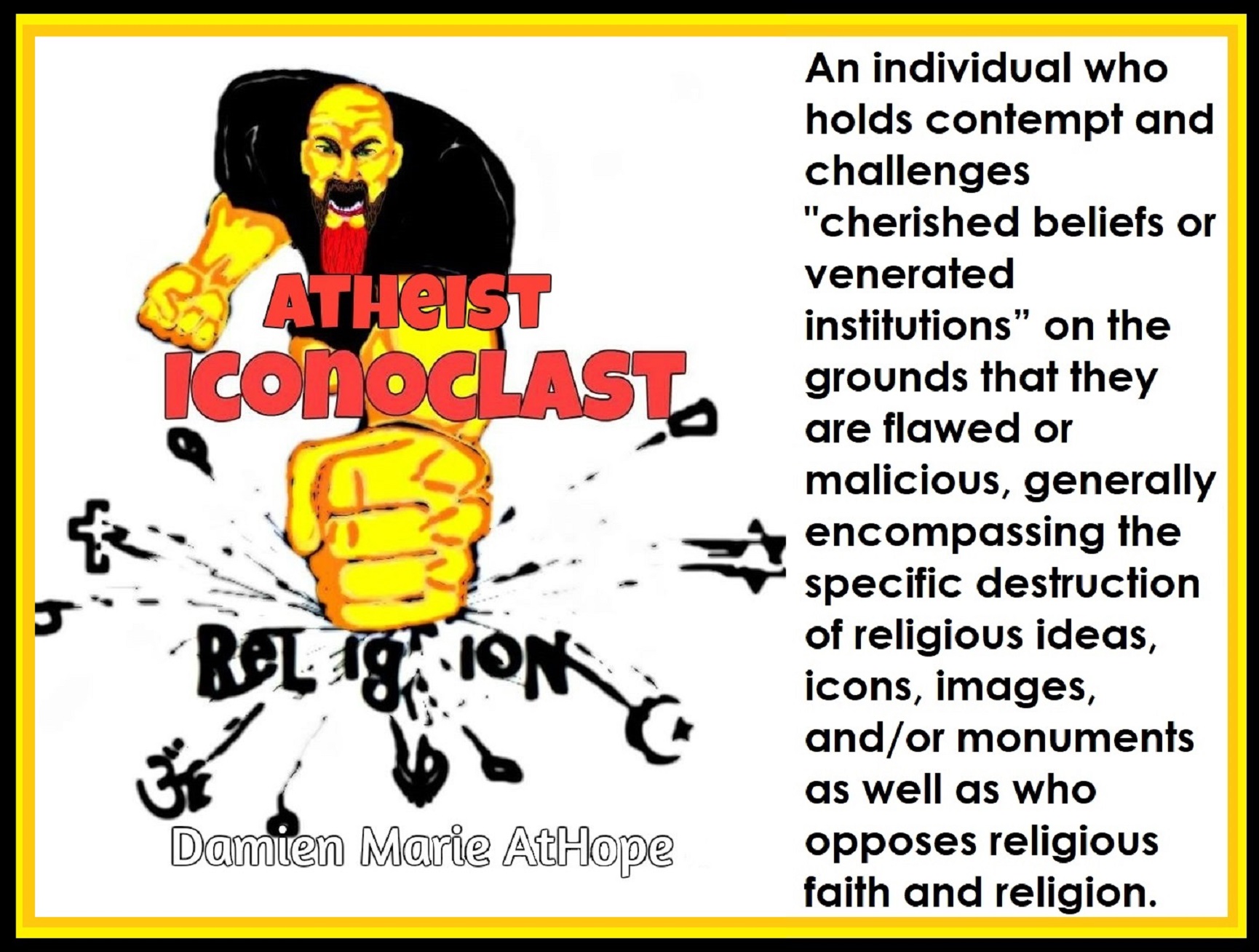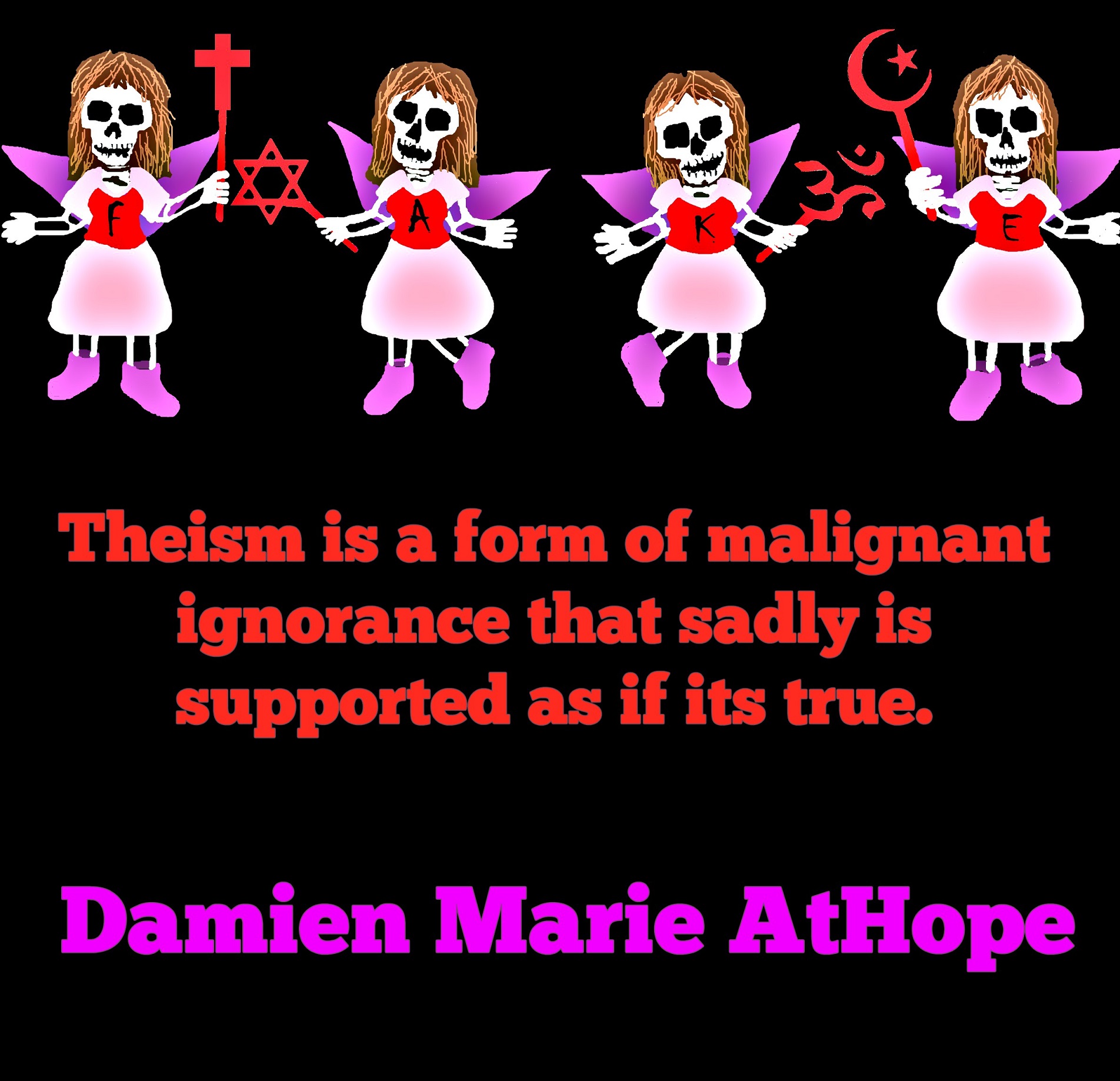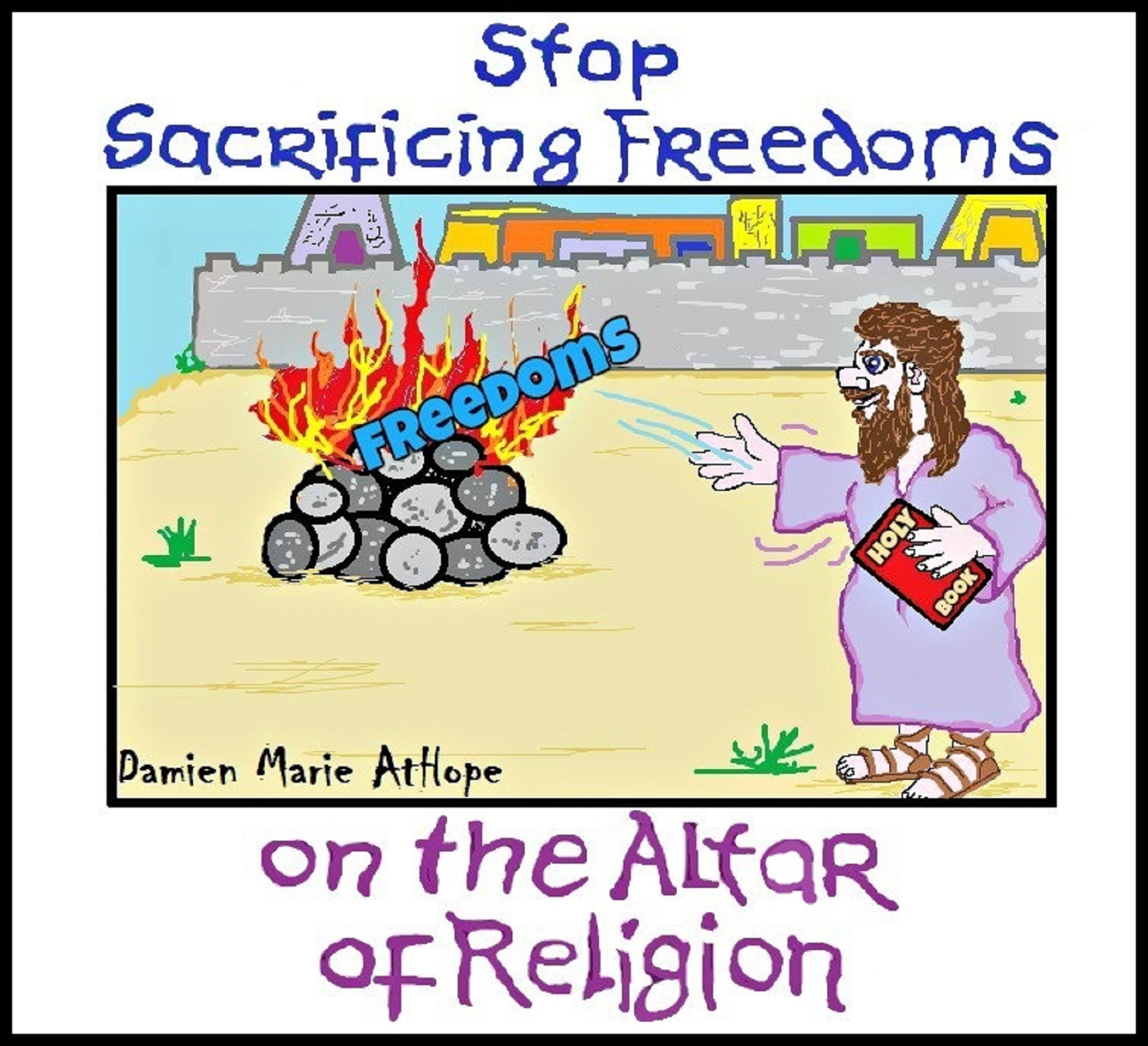



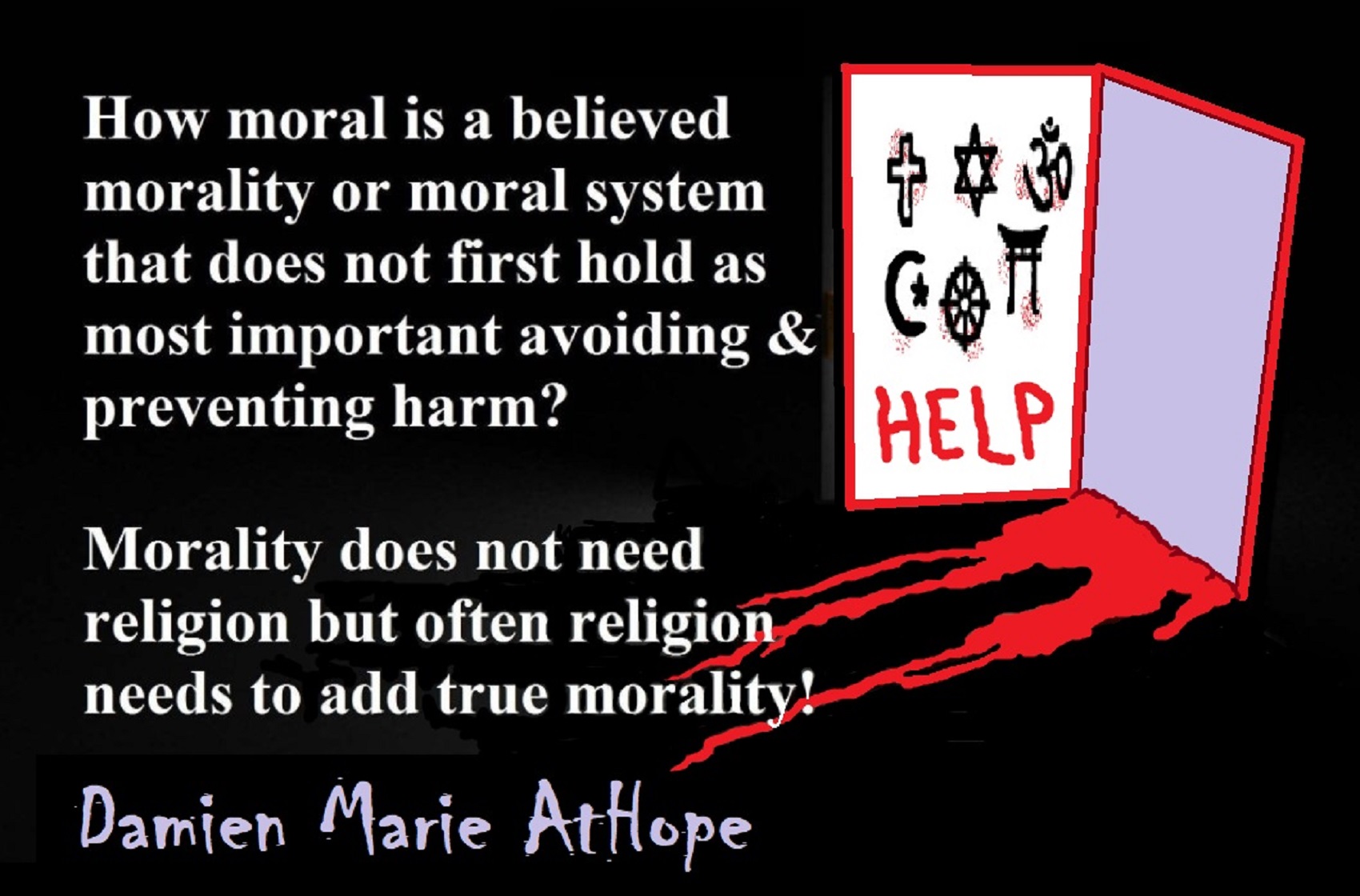

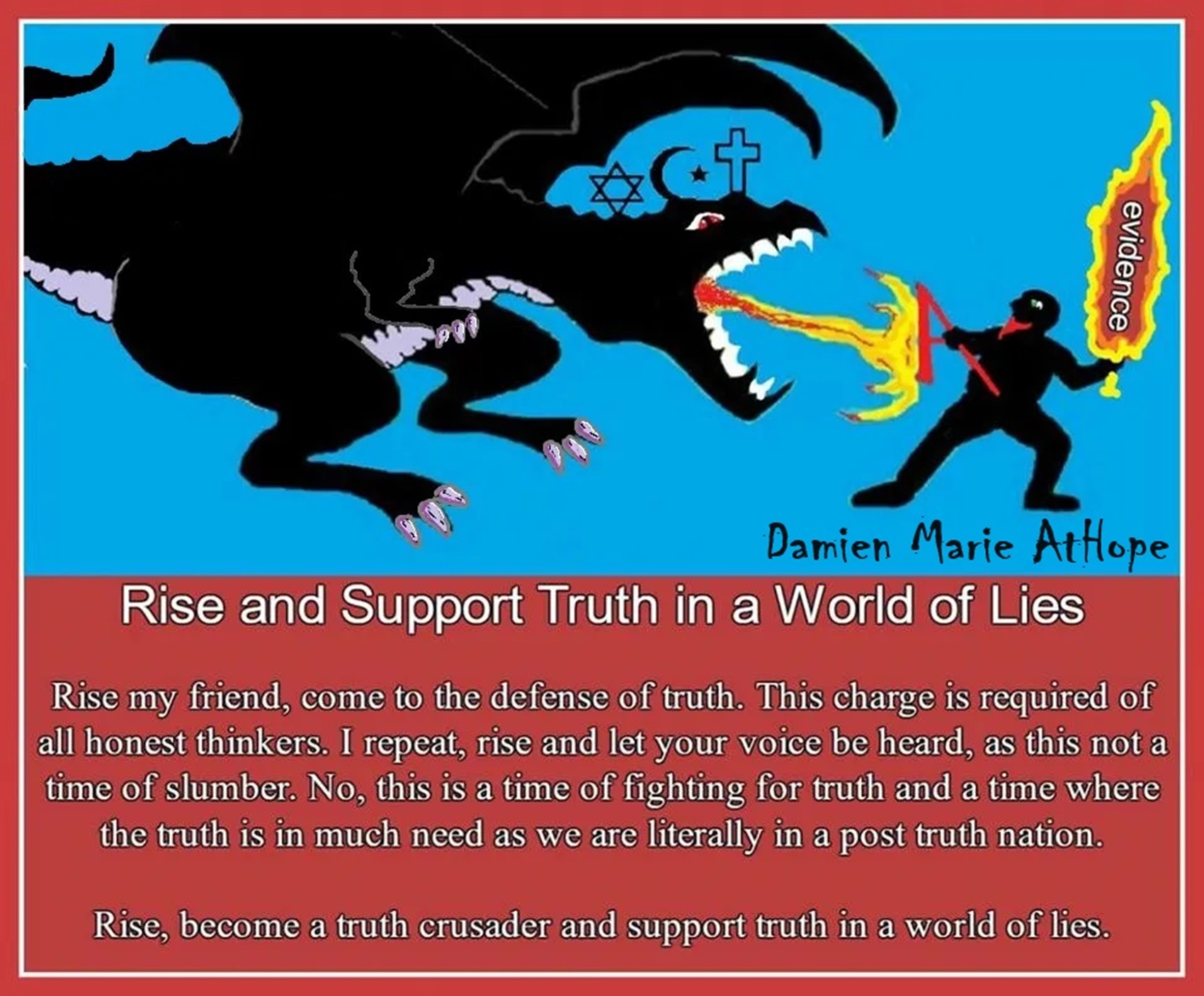
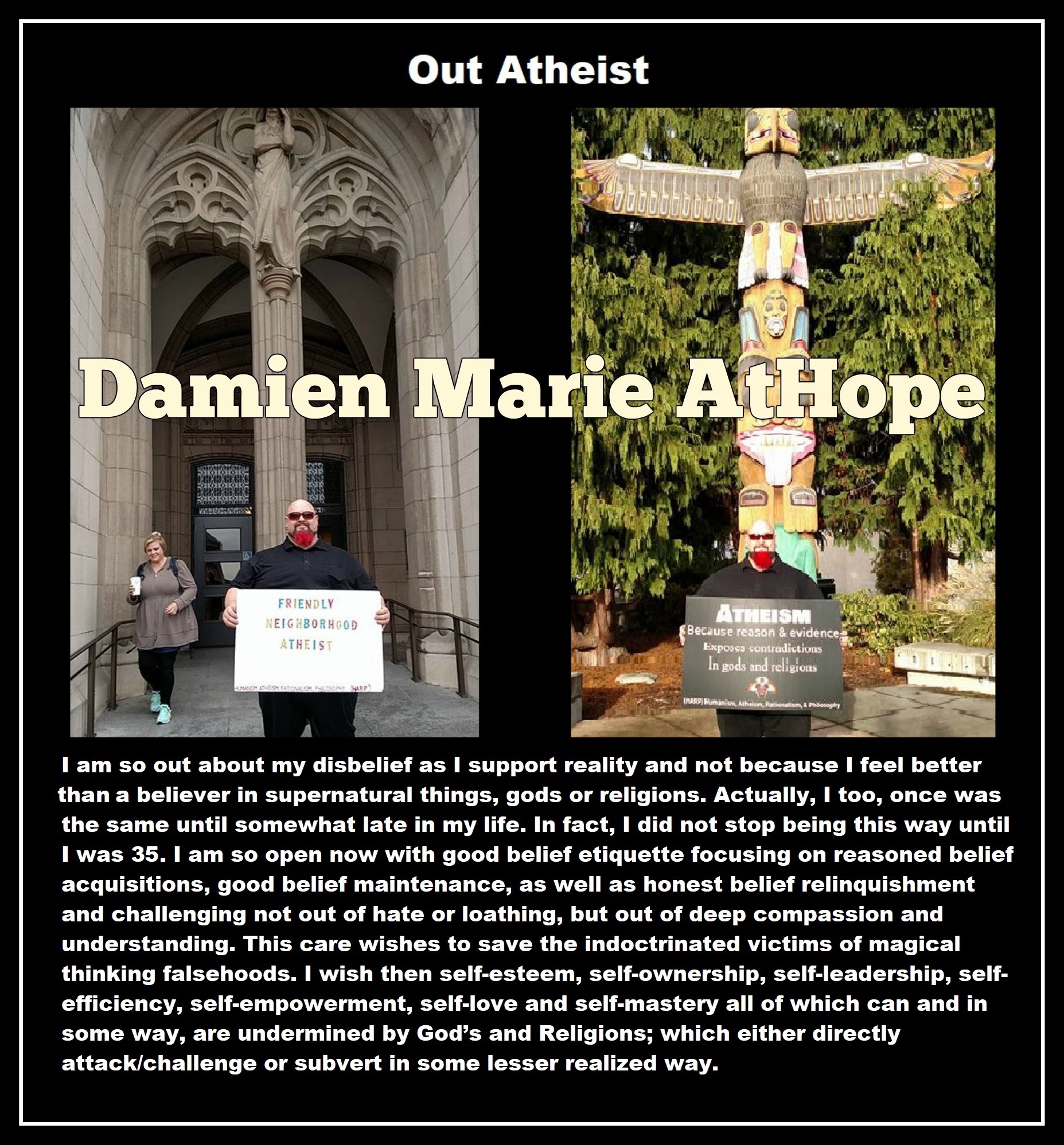

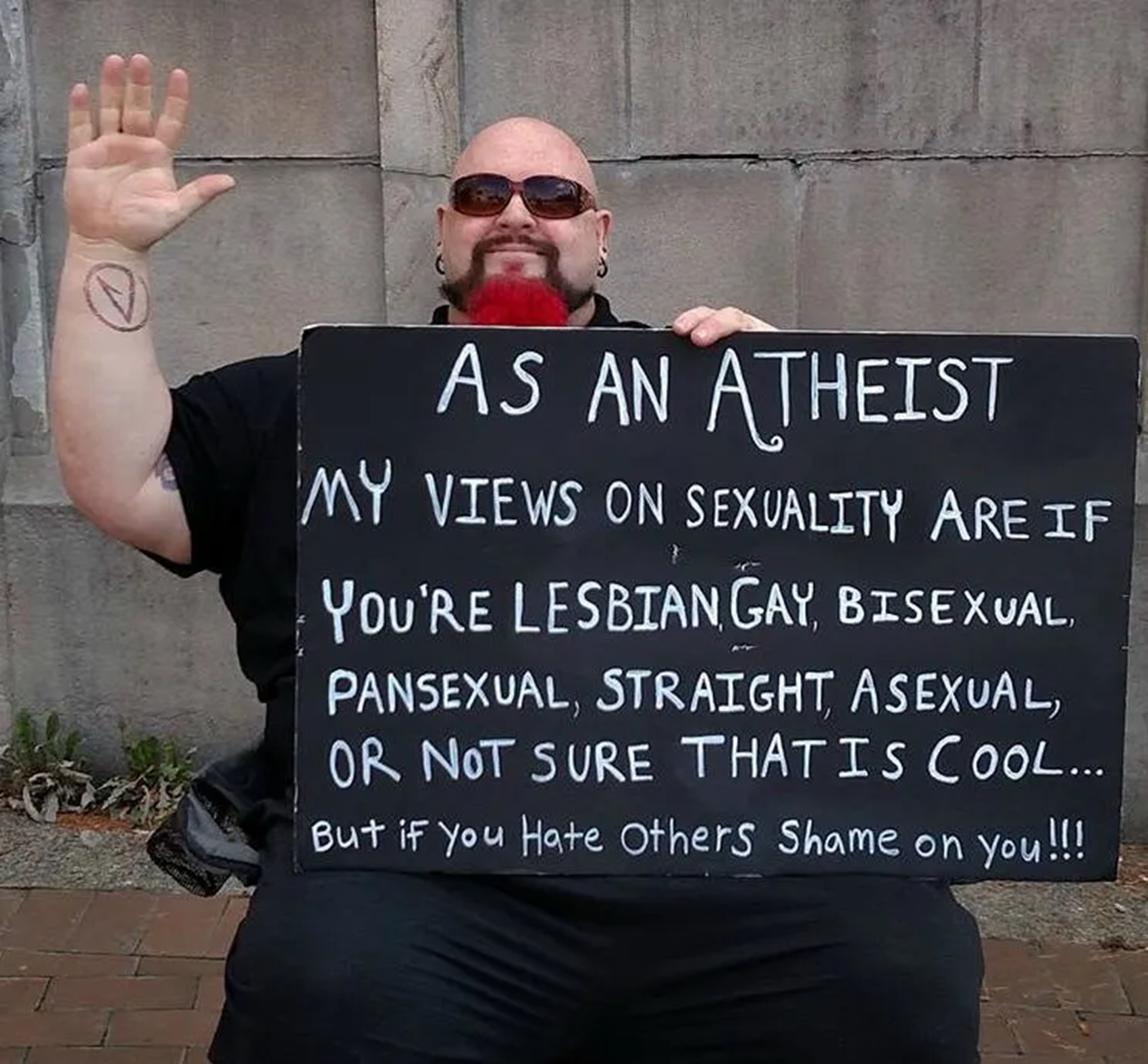
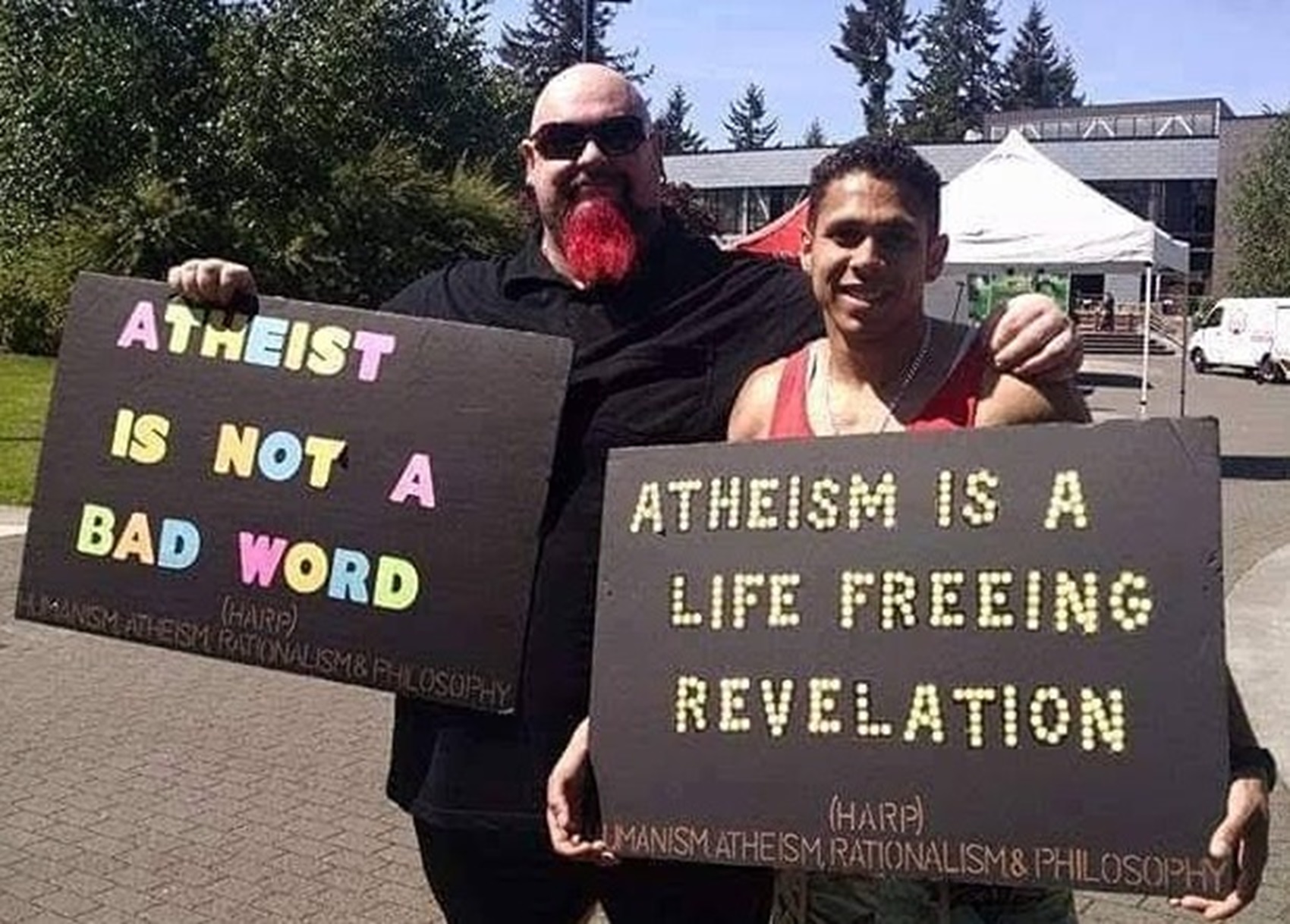
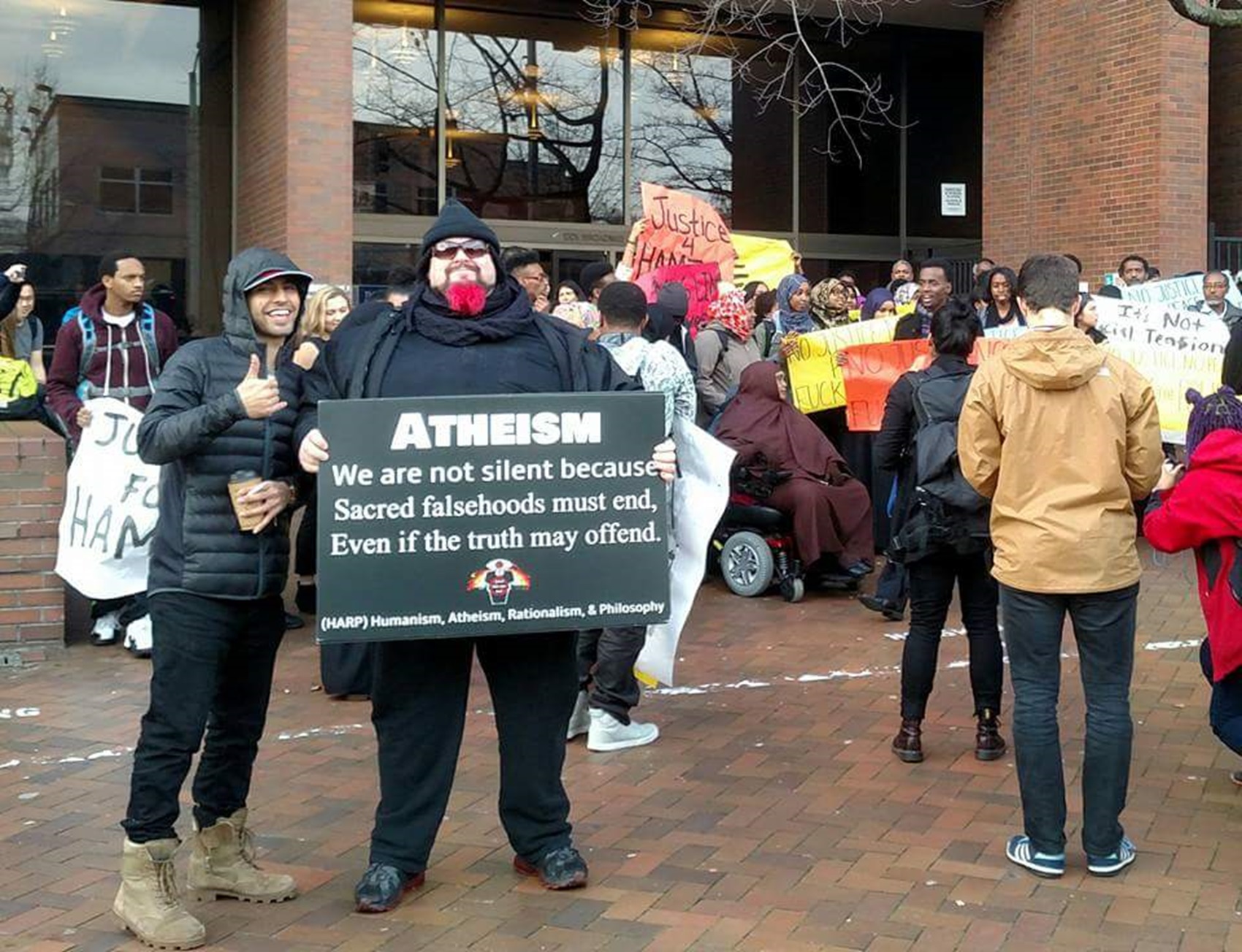
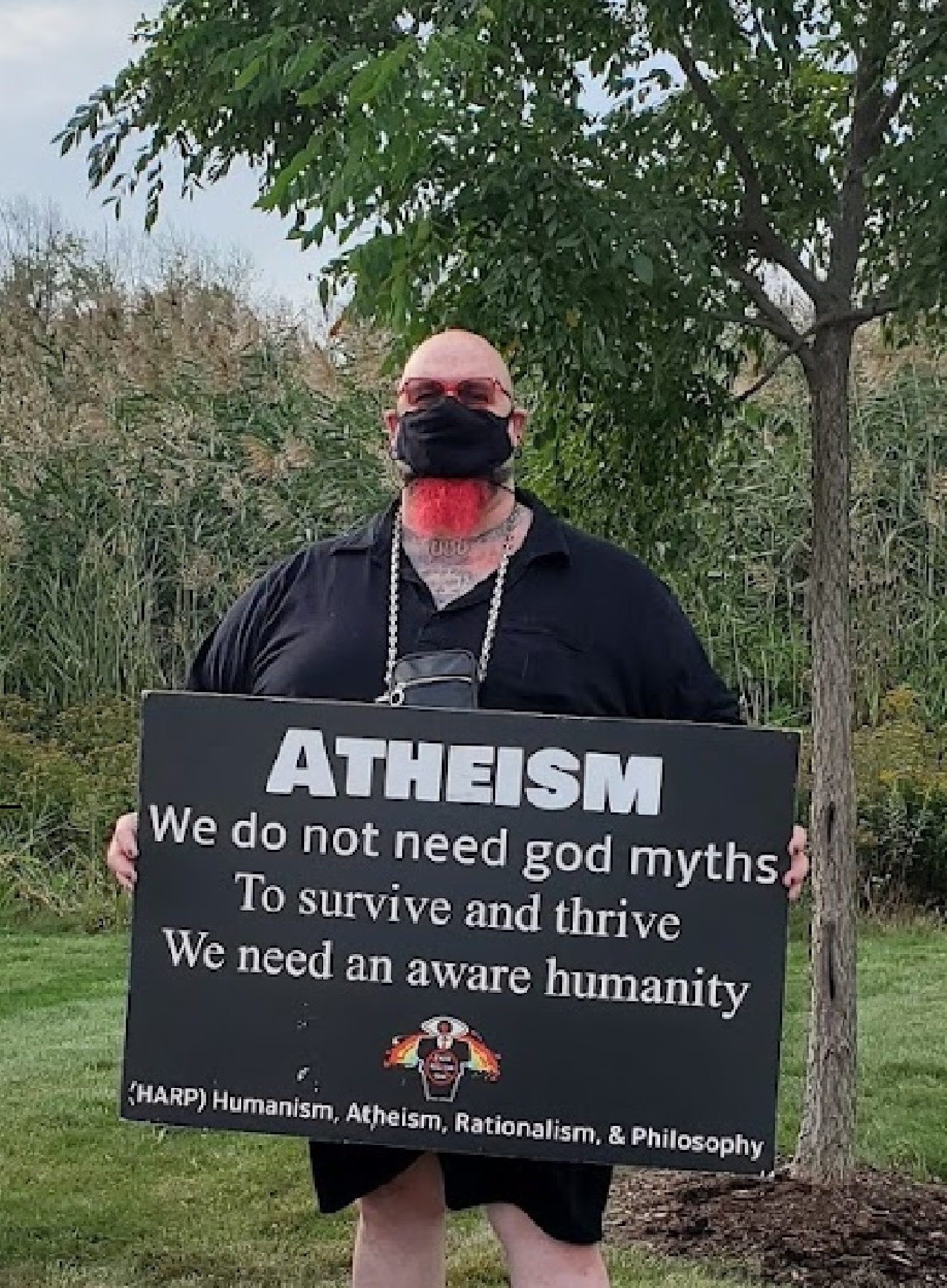

Religious Discrimination And Employment Policies/Practices
“An employee cannot be forced to participate (or not participate) in a religious activity as a condition of employment. Religious discrimination involves treating a person (an applicant or employee) unfavorably because of his or her religious beliefs. The law protects not only people who belong to traditional, organized religions, such as Buddhism, Christianity, Hinduism, Islam, and Judaism, but also others who have sincerely held religious, ethical, or moral beliefs.” ref
I tell people I am a universal ethicist as my moral persuasion is a generality about my morality theorizing or actions.
“Religious discrimination can also involve treating someone differently because that person is married to (or associated with) an individual of a particular religion. USA law forbids discrimination when it comes to any aspect of employment, including hiring, firing, pay, job assignments, promotions, layoff, training, fringe benefits, and any other term or condition of employment.” ref
Religious Discrimination & Harassment
“It is illegal to harass a person because of his or her religion. Harassment can include, for example, offensive remarks about a person’s religious beliefs or practices. Although the law doesn’t prohibit simple teasing, offhand comments, or isolated incidents that aren’t very serious, harassment is illegal when it is so frequent or severe that it creates a hostile or offensive work environment or when it results in an adverse employment decision (such as the victim being fired or demoted).” ref
“The harasser can be the victim’s supervisor, a supervisor in another area, a co-worker, or someone who is not an employee of the employer, such as a client or customer. Title VII also prohibits workplace or job segregation based on religion (including religious garb and grooming practices), such as assigning an employee to a non-customer contact position because of actual or feared customer preference.” ref
“USA law requires an employer or other covered entity to reasonably accommodate an employee’s religious beliefs or practices, unless doing so would cause more than a minimal burden on the operations of the employer’s business. This means an employer may be required to make reasonable adjustments to the work environment that will allow an employee to practice his or her religion. Examples of some common religious accommodations include flexible scheduling, voluntary shift substitutions or swaps, job reassignments, and modifications to workplace policies or practices.” ref
“Even in societies where freedom of religion is a constitutional right, adherents of religious minorities sometimes voice concerns about religious discrimination against them. Insofar as legal policies are concerned, cases that are perceived as religious discrimination might be the result of an interference of the religious sphere with other spheres of the public that are regulated by law.” ref
Discrimination against atheists
“Discrimination against atheists, both at present and historically, includes persecution of and discrimination against people who are identified as atheists. Discrimination against atheists may also comprise negative attitudes, prejudice, hostility, hatred, fear, or intolerance towards atheists and atheism.” ref
“Because atheism can be defined in various ways, those discriminated against or persecuted on the grounds of being atheists might not have been considered atheists in a different time or place. Thirteen Muslim countries officially punish atheism or apostasy by death and Humanists International asserts that “the overwhelming majority” of the 193 member states of the United Nations “at best discriminate against citizens who have no belief in a god and at worst can jail them for offenses dubbed blasphemy.” ref
“In some Muslim-majority countries, atheists face persecution and severe penalties such as the withdrawal of legal status or, in the case of apostasy, capital punishment.” ref
“Sometimes such discrimination is called atheophobia, atheistophobia, anti-atheism, anti-atheist discrimination.” ref
“Article 18 of the Universal Declaration of Human Rights is designed to protect the right to freedom of thought, conscience, and religion. In 1993, the UN’s human rights committee declared that article 18 of the International Covenant on Civil and Political Rights “protects theistic, non-theistic and atheistic beliefs, as well as the right not to profess any religion or belief”. The committee further stated that “the freedom to have or to adopt a religion or belief necessarily entails the freedom to choose a religion or belief, including the right to replace one’s current religion or belief with another or to adopt atheistic views”. Signatories to the convention are barred from “the use of threat of physical force or penal sanctions to compel believers or non-believers” to recant their beliefs or convert. Despite this, atheists still are persecuted in some parts of the world.” ref
“Modern theories of constitutional democracy assume that citizens are intellectually and spiritually autonomous and that governments should leave matters of religious belief to individuals and not coerce religious beliefs using sanctions or benefits. The constitutions, human rights conventions, and the religious liberty jurisprudence of most constitutional democracies provide legal protection of atheists and agnostics. In addition, freedom of expression provisions and legislation separating church from state also serve to protect the rights of atheists. As a result, open legal discrimination against atheists is not common in most Western countries. However, prejudice against atheists does exist in Western countries. A University of British Columbia study conducted in the United States found that believers distrusted atheists as much they did rapists. The study also showed that atheists had lower employment prospects.” ref
“Discrimination against atheists in the United States occurs in legal, personal, social, and professional contexts. Many American atheists compare their situation to the discrimination faced by ethnic minorities, LGBT communities, and women. “Americans still feel it’s acceptable to discriminate against atheists in ways considered beyond the pale for other groups,” asserted Fred Edwords of the American Humanist Association. The degree of discrimination, persecution, and social stigma atheists face in the United States, compared to other persecuted groups in the United States has been the subject of study and a matter of debate.” ref
“In the United States, seven state constitutions include religious tests that would effectively prevent atheists from holding public office, and in some cases being a juror/witness, though these have not generally been enforced since the early twentieth century. The U.S. Constitution permits an affirmation in place of an oath to allow atheists to give testimony in court or to hold public office. However, a United States Supreme Court case reaffirmed that the United States Constitution prohibits States and the Federal Government from requiring any kind of religious test for public office, in the specific case, as a notary public. This decision is generally understood to also apply to witness oaths.” ref
“Several American atheists have used court challenges to address discrimination against atheists. Michael Newdow challenged the inclusion of the phrase “under God” in the United States Pledge of Allegiance on behalf of his daughter, claiming that the phrase amounted to government endorsement of discrimination against atheists. He won the case at an initial stage, but the Supreme Court dismissed his claim, ruling that Newdow did not have standing to bring his case, thus disposing of the case without ruling on the constitutionality of the pledge.” ref
“Respondents to a survey were less likely to support a kidney transplant for hypothetical atheists and agnostics needing it, than for Christian patients with similar medical needs. As the Boy Scouts of America does not allow atheists as members, atheist families and the ACLU from the 1990s onwards have launched a series of court cases arguing discrimination against atheists. In response to ACLU lawsuits, the Pentagon in 2004 ended sponsorship of Scouting units, and in 2005 the BSA agreed to transfer all Scouting units out of government entities such as public schools.” ref
Despite polling showing that nonbelievers make up an increasingly large part of the population there is only one public atheist in all of the state legislatures across the nation. Few politicians have been willing to acknowledge their lack of belief in supreme beings, since such revelations have been considered “political suicide”. On 20 September 2007, Pete Stark became the first nontheist United States congressman to openly acknowledge a lack of belief, joining the millions of Americans who have long kept their views secret for fear of discrimination in their communities.” ref
“There is one state legislator, Ernie Chambers, currently holding a seat in the Nebraska State Legislature. Cecil Bothwell, who has publicly stated he does not believe in gods and that it is “certainly not relevant to public office”, was elected on 3 November 2009, to the Asheville, North Carolina city council after he won the third highest number of votes in the city election. Following the election, political opponents of Bothwell threatened to challenge his election on the grounds that the North Carolina Constitution does not allow for atheists to hold public office in the state. However, that provision, dating back to 1868, is unenforceable and invalid because the United States Constitution prevents religious tests for public office.” ref
“A 2015 Gallup survey found that 40% of Americans would not vote an atheist for president, and in polls prior to 2015, that number had reached about 50%. A 2014 study by the University of Minnesota found that 42% of respondents characterized atheists as a group that did “not at all agree with my vision of American society”, and that 44% would not want their child to marry an atheist. The negative attitudes towards atheists were higher than negative attitudes towards African-Americans and homosexuals but lower than the negative attitudes towards Muslims. Many in the U.S. associate atheism with immorality, including criminal behavior, extreme materialism, communism, and elitism. The studies also showed that the rejection of atheists was related to the respondent’s lack of exposure to diversity, education, and political orientations.” ref
“Atheists and atheist organizations have alleged discrimination against atheists in the military, and recently, with the development of the Army’s Comprehensive Soldier Fitness program, atheists have alleged institutionalized discrimination. In several child custody court rulings, atheist parents have been discriminated against, either directly or indirectly. As child custody laws in the United States are often based on the subjective opinion of family court judges, atheism has frequently been used to deny custody to non-religious parents on the basis that a parent’s lack of faith displays a lack of morality required to raise a child.” ref
“Prominent atheists and atheist groups have said that discrimination against atheists is illustrated by a statement reportedly made by George H. W. Bush during a public press conference just after announcing his candidacy for the presidency in 1987. When asked by journalist Robert Sherman about the equal citizenship and patriotism of American atheists, Sherman reported that Bush answered, “No, I don’t know that atheists should be regarded as citizens, nor should they be regarded as patriotic. This is one nation under God.” Sherman did not tape the exchange and no other newspaper ran a story on it at the time.” ref
“George H. W. Bush‘s son, George W. Bush, responded to a question about the role of faith in his presidency during a 3 November 2004 press conference, “I will be your president regardless of your faith. And I don’t expect you to agree with me, necessarily, on religion. As a matter of fact, no president should ever try to impose religion on our society. The great – the great tradition of America is one where people can worship the – the way they want to worship. And if they choose not to worship, they’re just as patriotic as your neighbor.”” ref
“On 16 December 2016, President Barack Obama signed H.R. 1150, an amendment to the Frank R. Wolf International Religious Freedom Act. It includes protections for “non-theistic beliefs, as well as the right not to profess or practice any religion at all.” ref
Atheists eligible to hold office in America
“Torcaso v. Watkins, 367 U.S. 488 (1961) was a United States Supreme Court case in which the court reaffirmed that the United States Constitution prohibits States and the Federal Government from requiring any kind of religious test for public office; the specific case with Torcaso was regarding his being an atheist and his work as a notary public. The constitutions of eight U.S. states ban atheists from holding public office. However, these laws are unenforceable due to conflicting with the First Amendment and Article VI of the United States Constitution:” ref
- Arkansas
- Article 19, Section 1
“No person who denies the being of a God shall hold any office in the civil departments of this State, nor be competent to testify as a witness in any Court.” ref - Maryland
- Article 37
“That no religious test ought ever to be required as a qualification for any office of profit or trust in this State, other than a declaration of belief in the existence of God; nor shall the Legislature prescribe any other oath of office than the oath prescribed by this Constitution.” ref - Mississippi
- Article 14, Section 265
“No person who denies the existence of a Supreme Being shall hold any office in this state.” ref - North Carolina
- Article 6, Section 8
“The following persons shall be disqualified for office: First, any person who shall deny the being of Almighty God.” ref - South Carolina
- Article 17, Section 4
“No person who denies the existence of a Supreme Being shall hold any office under this Constitution.” ref - Tennessee
- Article 9, Section 2
“No person who denies the being of God, or a future state of rewards and punishments, shall hold any office in the civil department of this state.” ref - Texas
- Article 1, Section 4
“No religious test shall ever be required as a qualification to any office, or public trust, in this State; nor shall anyone be excluded from holding office on account of his religious sentiments, provided he acknowledge the existence of a Supreme Being.” ref
An eighth state constitution affords special protection to theists.
- Pennsylvania
- Article 1, Section 4
“No person who acknowledges the being of a God and a future state of rewards and punishments shall, on account of his religious sentiments, be disqualified to hold any office or place of trust or profit under this Commonwealth.” ref
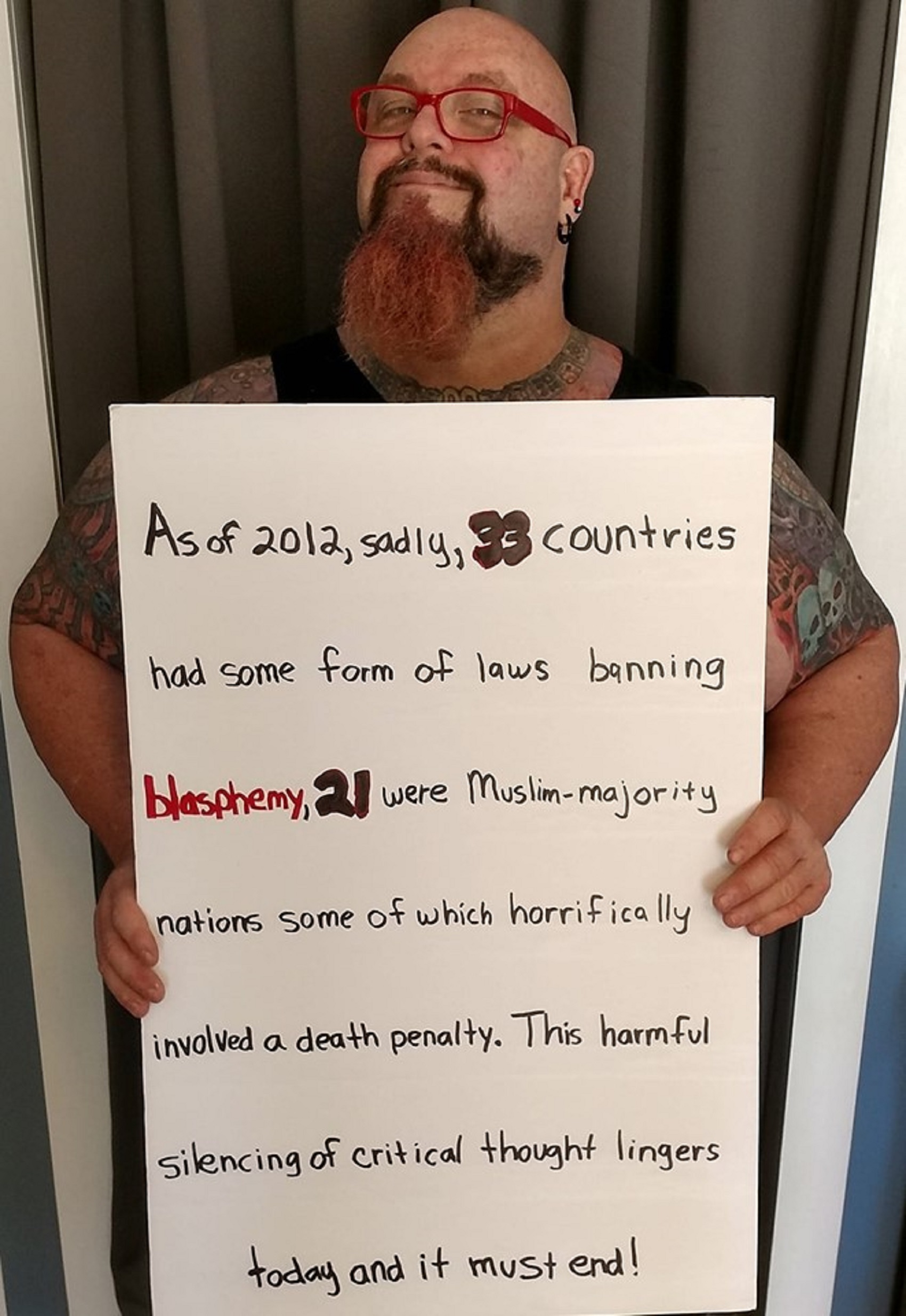
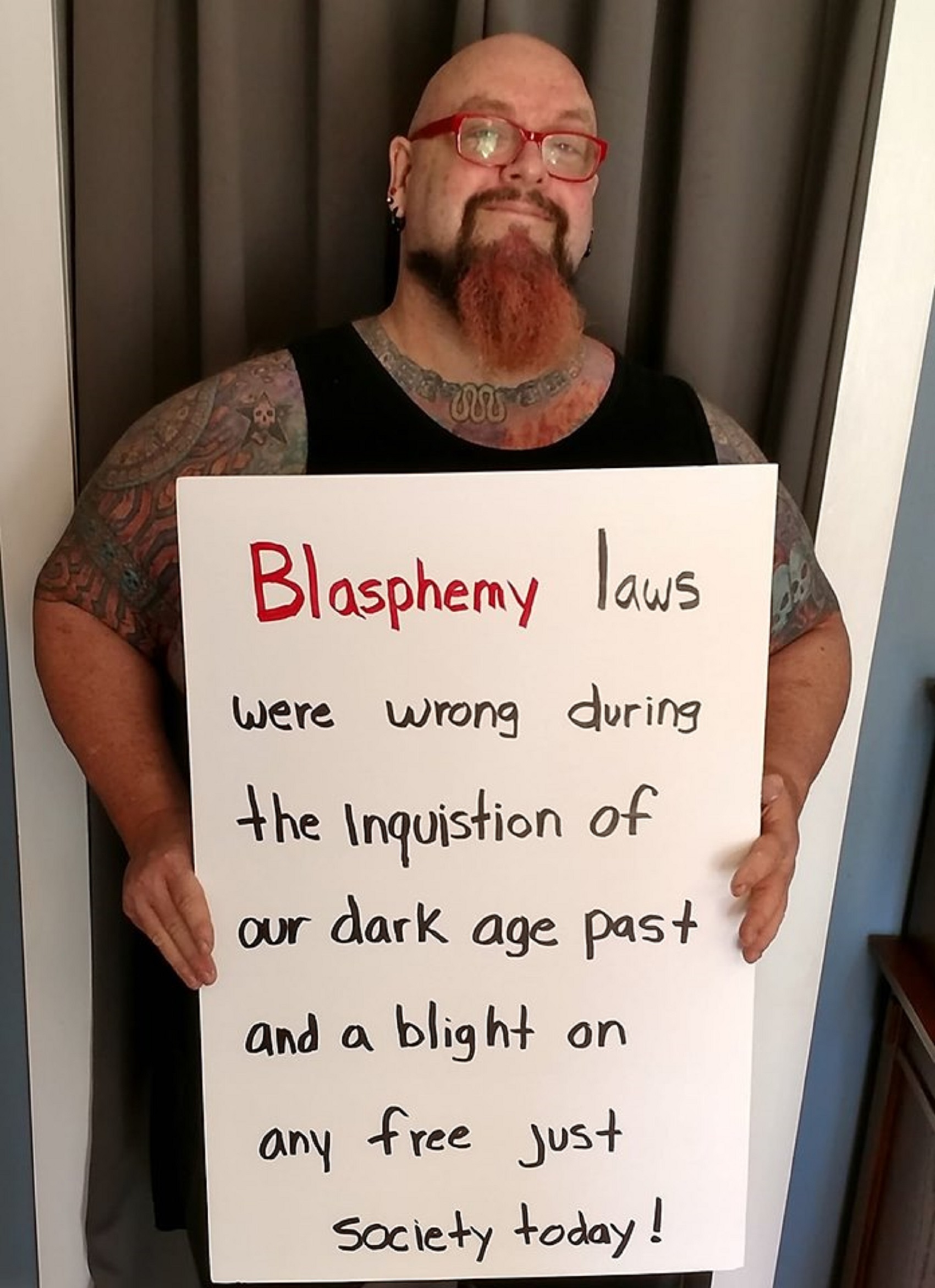

If you are religious ok its your life, you have religious convictions on how you believe your life should be lived by all means, live your life as you see fit. I agree no one should make you live your personal life anyway not right for you, as it is your life. We both can agree on that. Good now that we agree, so when it comes to forceful opinions about laws for others’ lives or political positions working against letting others live their life as they see fit, I don’t want to hear you think you can freely oppress others just because of your religious convictions or because of how you wish to freely live your life feel justified wishing to stop others do the same. Just live your life and stay out of my life or my freedom to live it as I see fit. According to a 2012 Gallup poll, 17.8 percent of all Americans said they were nonreligious. Our numbers are growing as America increasingly becomes a secular society, Atheists, as well as agnostics, skeptics, secularists and humanists, have a huge stake in how others who are religious keep trying to push their religious opinions and religious convictions in our free secular democracy and we will no longer be silent we are making our secular democracy voices heard. http://www.pewforum.org/2012/10/09/nones-on-the-rise/
Most religions in the world have and/or are killing people. Just think of all the wars fought between religions and in the religions, themselves, lots of people were killed. In those wars so many people died in both sides to protect their god but the god did not protect them. In other words, all the people killed religion or gods was the driving reason. In ancient times, the notion of a divine “division of labor” ruler or slave as well as oppressor and the oppressed. And while early empires could be described as henotheistic, i.e. dominated by a single god of the ruling elite (as Morduch in the Babylonian empire, Assur in the Assyrian empire, etc.), or more directly by defining the ruler in an imperial cult, the concept of “Holy War” enters a new phase with the development of monotheism, with a divine “division of labor” took the control of one’s life, almost every aspect was now to be controlled by the god, the religion, the priest, the king. Monotheism is distinguished from henotheism, a religious system in which the believer worships one god without denying that others may worship different gods with equal validity, and monotheism-centrism or single god theistic preference and the god they choose is the only god they believe one can or should choose, the recognition of the existence of many gods but with the consistent worship of only one deity. The broader definition of monotheism characterizes the traditions of Bábism, the Bahá’í Faith, Cao Dai (Caodaiism), Cheondoism (Cheondogyo), Christianity, Deism, Eckankar, Hindu sects such as Shaivism and Vaishnavism, Islam, Judaism, Mandaeism, Rastafari, Seicho no Ie, Sikhism, Tengrism (Tangrism), Tenrikyo (Tenriism), Yazidism, and Zoroastrianism, and elements of pre-monotheistic thought are found in early religions such as Atenism, Ancient Chinese religion, and Yahwism. So, monotheistic thought of one supreme god made “war personified” thus killing for a god more fully enters the scene with the emergence and promotion of monotheism or “man”-o-theism, and while early empires could be described as henotheistic, i.e. dominated by a single god of the ruling elite it is monotheism that pushed the killing of people for the religion or god to the forefront the concept of “Holy War” enters a new phase with the development of monotheism. Many people in many cities in many countries of the world were being killed by many religions and the same thing has been going on for about the 3,000 years in which monotheism has been promoted and one god driven religion wished to wipe out all others like the rulers that believed in /used these gods to rule, oppress, control, and kill. Same things are happening in many countries in the world. Thinks are not much different then long ago as many different groups today kill other not just in different religions but even people in the same religion are also killing each other. So, religions are killing people. People in ancient times where scientifically uninformed to put it lightly. Such people were the ones creating theist so called holy books. They believed the sun was revolving around earth. The truth is that the planet earth is revolving around the sun. So, there are many mistakes in many religious books written by scientifically uninformed people and thus we have so many magical explanations in the scientifically uninformed holy books religions cherish. Many religions are making people slaves killing their ability to critically think about their religion or adequately respect science over unconfirmed myths. Religions are putting the mind of people inside a cage and are not allowing freedom to people even to think rationally or evidentiary. Religions are not allowing development of mind of people crushing the brightness of who they are with the darkening of groupthink aka non-thinking indoctrination. So, religions are producing only narrow or closed-minded people. They cannot produce broad or open-minded people. Some religions are against civilization. So, we must free people from religious slavery. These narrow or closed-minded people read the old religious books of groupthink aka non-thinking indoctrination. And thereafter humanity is in danger as these BELIEVERS question whether they will allow killing of people to protect such books that have errors and lies, religions that promote separation, or gods devoid of evidence or any kind of proof? We atheists will wait and see, and likely we will see more religions kill people. Ref
“Religious violence is, specifically, violence that is motivated by or in reaction to religious precepts, texts, or doctrines. This includes violence against religious institutions, people, objects, or events when the violence is motivated to some degree by some religious aspect of the target or by the precepts of the attacker. Religious violence does not refer exclusively to acts committed by religious groups, but includes acts committed by secular groups against religious groups. Religious violence, like all violence, is a cultural process that is context-dependent and very complex. Oversimplifications of religion and violence often lead to misguided understandings and exaggerations of causes for why some people commit violence and why most do not commit violence. Religious violence is primarily the domain of the violent “actor”, which may be distinguished between individual and collective forms of violence. Overall, religious violence is perpetrated for a wide variety of ideological reasons and is generally only one of the contributing social and political factors that leads to unrest. Studies of supposed cases of religious violence often conclude that violence is strongly driven by ethnic animosities rather than by religious worldviews. Recently, scholars have questioned the very concept of “religious violence” and the extent to which religious, political, economic, or ethnic aspects of a conflict are even meaningful. Some observe that the very concept of “religion” is a modern invention and not something that is universal across cultures or historical and thereby makes “religious violence” a myth. Since all cases of violence and war include social, political, and economic dimensions and since there is no consensus on definitions of “religion” among scholars and no way to isolate “religion” from the rest of the more likely motivational dimensions, it is incorrect to label any violent event as “religious”. Numerous cases of supposed acts of religious violence such as the Thirty Years War, the French Wars of Religion, the Protestant-Catholic conflict in Ireland, the Sri Lankan Civil War, 9/11 and other terrorist attacks, the Bosnian War, and the Rwandan Civil War were all primarily motivated by social, political, and economic issues rather than religion. Charles Selengut characterizes the phrase “religion and violence” as “jarring,” asserting that “religion is thought to be opposed to violence and a force for peace and reconciliation. He acknowledges, however, that “the history and scriptures of the world’s religions tell stories of violence and war even as they speak of peace and love.” According to Matthew Rowley, three hundred contributing causes of religious violence have been discussed by some scholars, however he notes that “violence in the name of God is a complex phenomenon and oversimplification further jeopardizes peace because it obscures many of the causal factors.” In another piece, Matthew Rowley notes 15 ways to address the complexity of violence, both secular and religious, and notes that secular narratives of religious violence tend to be erroneous or exaggerated due to over simplification of religious people, their beliefs, thinking in false dichotomies, and ignoring complex secular causes of supposed “religious violence”. He also notes that when discussing religious violence, one should also note that the overwhelming majority of religious people do not get inspired to engage in violence. Ralph Tanner similarly describes the combination of religion and violence as “uncomfortable”, asserting that religious thinkers generally avoid the conjunction of the two and argue that religious violence is “only valid in certain circumstances which are invariably one-sided”. Michael Jerryson argues that scholarship on religion and violence sometimes overlook non-Abrahamic religions. This tendency provides considerable problems, one of which is the support of faulty associations. For example, he finds a persistent global pattern to align religious like Islam as a cause for violence and others like Buddhism as an explanation of peace. In many instances of political violence, religion tends to play a central role. This is especially true of terrorism, which sees violence committed against unarmed noncombatants in order to inspire fear and achieve some political goal. Terrorism expert Martha Crenshaw suggests that religion is just a mask used by political movements to draw support. Crenshaw outlines two approaches in observing religious violence to view the underlying mechanisms. One approach, called the instrumental approach, sees religious violence as acting as a rational calculation to achieve some political end. Increasing the costs of performing such violence will help curb it. Crenshaw’s alternate approach sees religious violence stemming from the organizational structure of religious communities, with the heads of these communities acting as political figureheads. Crenshaw suggests that threatening the internal stability of these organizations (perhaps by offering a nonviolent alternative) will dissuade religious organizations from performing political violence. A third approach sees religious violence as a result of community dynamics rather than religious duty. Systems of meanings developed within these communities allow for religious interpretation to justify violence, and so acts like terrorism happen because people are part of communities of violence. In this way, religious violence and terrorism are performances designed to inspire an emotional reaction from both those in the community and those outside of it. While religion can be used as a means of rallying support for violence, religious leaders regularly denounce such manipulations as contrary to the teachings of their belief. Hector Avalos argues that religions create violence over four scarce resources: access to divine will, knowledge, primarily through scripture; sacred space; group privileging; and salvation. Not all religions have or use theses four resources. He believes that religious violence is particularly untenable as these resources are never verifiable and, unlike claims to scarce resources such a water or land, cannot be adjudicated objectively. Regina Schwartz argues that all monotheistic religions are inherently violent because of an exclusivism that inevitably fosters violence against those that are considered outsiders. Lawrence Wechsler asserts that Schwartz isn’t just arguing that Abrahamic religions have a violent legacy, but that the legacy is actually genocidal in nature.” Ref


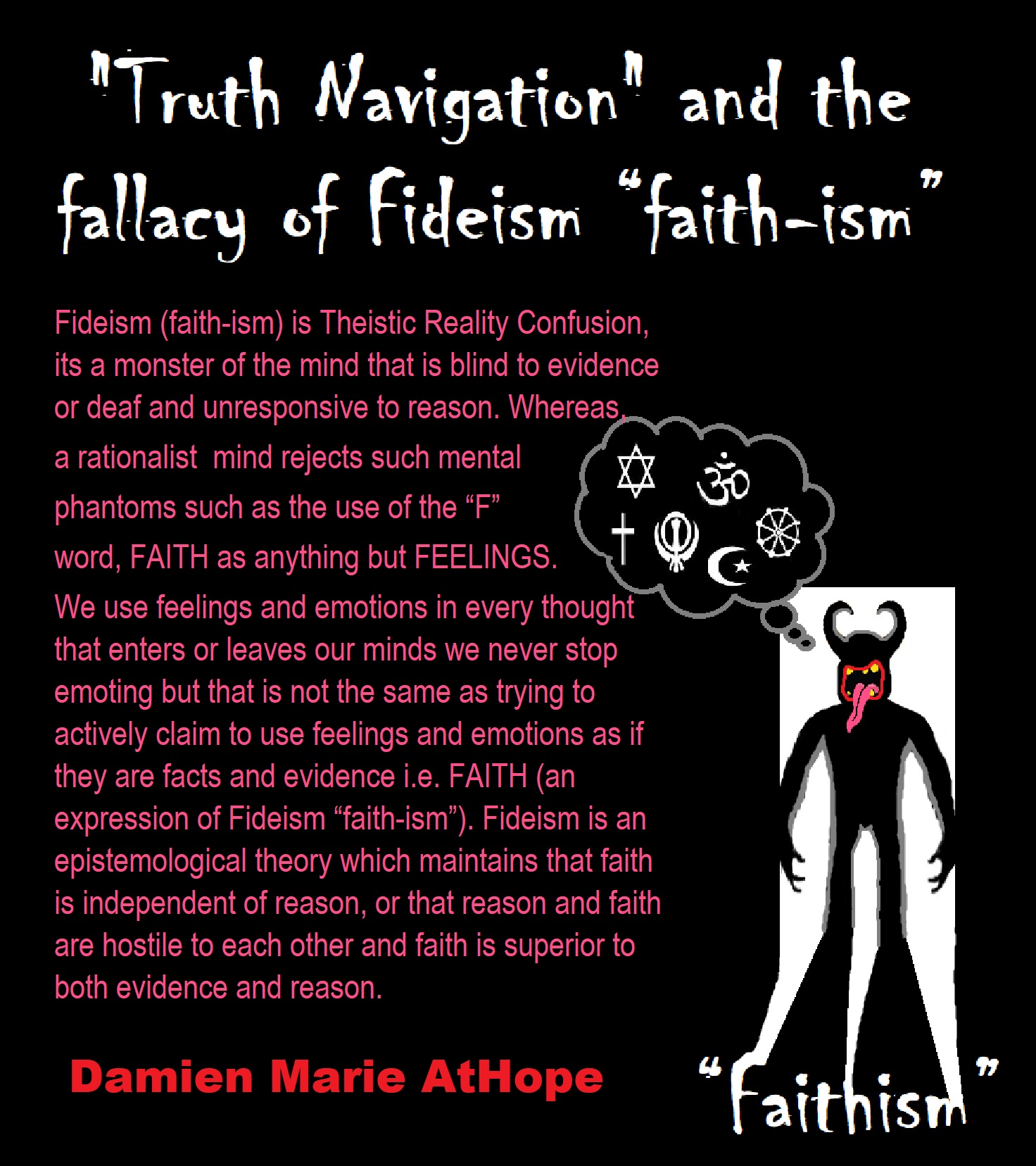


My thoughts on Religion Evolution with external links for more info:
- (Pre-Animism Africa mainly, but also Europe, and Asia at least 300,000 years ago), (Pre-Animism – Oxford Dictionaries)
- (Animism Africa around 100,000 years ago), (Animism – Britannica.com)
- (Totemism Europe around 50,000 years ago), (Totemism – Anthropology)
- (Shamanism Siberia around 30,000 years ago), (Shamanism – Britannica.com)
- (Paganism Turkey around 12,000 years ago), (Paganism – BBC Religion)
- (Progressed Organized Religion “Institutional Religion” Egypt around 5,000 years ago), (Ancient Egyptian Religion – Britannica.com)
- (CURRENT “World” RELIGIONS after 4,000 years ago) (Origin of Major Religions – Sacred Texts)
- (Early Atheistic Doubting at least by 2,600 years ago) (History of Atheism – Wikipedia)
“Religion is an Evolved Product” and Yes, Religion is Like Fear Given Wings…
Atheists talk about gods and religions for the same reason doctors talk about cancer, they are looking for a cure, or a firefighter talks about fires because they burn people and they care to stop them. We atheists too often feel a need to help the victims of mental slavery, held in the bondage that is the false beliefs of gods and the conspiracy theories of reality found in religions.
Understanding Religion Evolution:
- Pre-Animism (at least 300,000 years ago)
- Animism (Africa: 100,000 years ago)
- Totemism (Europe: 50,000 years ago)
- Shamanism (Siberia: 30,000 years ago)
- Paganism (Turkey: 12,000 years ago)
- Progressed organized religion (Egypt: 5,000 years ago), (Egypt, the First Dynasty 5,150 years ago)
- CURRENT “World” RELIGIONS (after 4,000 years ago)
- Early Atheistic Doubting (at least by 2,600 years ago)
“An Archaeological/Anthropological Understanding of Religion Evolution”
It seems ancient peoples had to survived amazing threats in a “dangerous universe (by superstition perceived as good and evil),” and human “immorality or imperfection of the soul” which was thought to affect the still living, leading to ancestor worship. This ancestor worship presumably led to the belief in supernatural beings, and then some of these were turned into the belief in gods. This feeble myth called gods were just a human conceived “made from nothing into something over and over, changing, again and again, taking on more as they evolve, all the while they are thought to be special,” but it is just supernatural animistic spirit-belief perceived as sacred.
Quick Evolution of Religion?
Pre-Animism (at least 300,000 years ago) pre-religion is a beginning that evolves into later Animism. So, Religion as we think of it, to me, all starts in a general way with Animism (Africa: 100,000 years ago) (theoretical belief in supernatural powers/spirits), then this is physically expressed in or with Totemism (Europe: 50,000 years ago) (theoretical belief in mythical relationship with powers/spirits through a totem item), which then enlists a full-time specific person to do this worship and believed interacting Shamanism (Siberia/Russia: 30,000 years ago) (theoretical belief in access and influence with spirits through ritual), and then there is the further employment of myths and gods added to all the above giving you Paganism (Turkey: 12,000 years ago) (often a lot more nature-based than most current top world religions, thus hinting to their close link to more ancient religious thinking it stems from). My hypothesis is expressed with an explanation of the building of a theatrical house (modern religions development). Progressed organized religion (Egypt: 5,000 years ago) with CURRENT “World” RELIGIONS (after 4,000 years ago).
Historically, in large city-state societies (such as Egypt or Iraq) starting around 5,000 years ago culminated to make religion something kind of new, a sociocultural-governmental-religious monarchy, where all or at least many of the people of such large city-state societies seem familiar with and committed to the existence of “religion” as the integrated life identity package of control dynamics with a fixed closed magical doctrine, but this juggernaut integrated religion identity package of Dogmatic-Propaganda certainly did not exist or if developed to an extent it was highly limited in most smaller prehistoric societies as they seem to lack most of the strong control dynamics with a fixed closed magical doctrine (magical beliefs could be at times be added or removed). Many people just want to see developed religious dynamics everywhere even if it is not. Instead, all that is found is largely fragments until the domestication of religion.
Religions, as we think of them today, are a new fad, even if they go back to around 6,000 years in the timeline of human existence, this amounts to almost nothing when seen in the long slow evolution of religion at least around 70,000 years ago with one of the oldest ritual worship. Stone Snake of South Africa: “first human worship” 70,000 years ago. This message of how religion and gods among them are clearly a man-made thing that was developed slowly as it was invented and then implemented peace by peace discrediting them all. Which seems to be a simple point some are just not grasping how devastating to any claims of truth when we can see the lie clearly in the archeological sites.
I wish people fought as hard for the actual values as they fight for the group/clan names political or otherwise they think support values. Every amount spent on war is theft to children in need of food or the homeless kept from shelter.
Here are several of my blog posts on history:
- To Find Truth You Must First Look
- (Magdalenian/Iberomaurusian) Connections to the First Paganists of the early Neolithic Near East Dating from around 17,000 to 12,000 Years Ago
- Natufians: an Ancient People at the Origins of Agriculture and Sedentary Life
- Possible Clan Leader/Special “MALE” Ancestor Totem Poles At Least 13,500 years ago?
- Jewish People with DNA at least 13,200 years old, Judaism, and the Origins of Some of its Ideas
- Baltic Reindeer Hunters: Swiderian, Lyngby, Ahrensburgian, and Krasnosillya cultures 12,020 to 11,020 years ago are evidence of powerful migratory waves during the last 13,000 years and a genetic link to Saami and the Finno-Ugric peoples.
- The Rise of Inequality: patriarchy and state hierarchy inequality
- Fertile Crescent 12,500 – 9,500 Years Ago: fertility and death cult belief system?
- 12,400 – 11,700 Years Ago – Kortik Tepe (Turkey) Pre/early-Agriculture Cultic Ritualism
- Ritualistic Bird Symbolism at Gobekli Tepe and its “Ancestor Cult”
- Male-Homosexual (female-like) / Trans-woman (female) Seated Figurine from Gobekli Tepe
- Could a 12,000-year-old Bull Geoglyph at Göbekli Tepe relate to older Bull and Female Art 25,000 years ago and Later Goddess and the Bull cults like Catal Huyuk?
- Sedentism and the Creation of goddesses around 12,000 years ago as well as male gods after 7,000 years ago.
- Alcohol, where Agriculture and Religion Become one? Such as Gobekli Tepe’s Ritualistic use of Grain as Food and Ritual Drink
- Neolithic Ritual Sites with T-Pillars and other Cultic Pillars
- Paganism: Goddesses around 12,000 years ago then Male Gods after 7,000 years ago
- First Patriarchy: Split of Women’s Status around 12,000 years ago & First Hierarchy: fall of Women’s Status around 5,000 years ago.
- Natufians: an Ancient People at the Origins of Agriculture and Sedentary Life
- J DNA and the Spread of Agricultural Religion (paganism)
- Paganism: an approximately 12,000-year-old belief system
- Paganism 12,000 years old: related to “Anarchism and Socialism” (Pre-Capitalism)
- Shaman burial in Israel 12,000 years ago and the Shamanism Phenomena
- Need to Mythicized: gods and goddesses
- 12,000 – 7,000 Years Ago – Paleo-Indian Culture (The Americas)
- 12,000 – 2,000 Years Ago – Indigenous-Scandinavians (Nordic)
- Norse did not wear helmets with horns?
- Pre-Pottery Neolithic Skull Cult around 11,500 to 8,400 Years Ago?
- 10,400 – 10,100 Years Ago, in Turkey the Nevail Cori Religious Settlement
- 9,000-6,500 Years Old Submerged Pre-Pottery/Pottery Neolithic Ritual Settlements off Israel’s Coast
- Catal Huyuk “first religious designed city” around 9,500 to 7,700 years ago (Turkey)
- Cultic Hunting at Catal Huyuk “first religious designed city”
- Special Items and Art as well as Special Elite Burials at Catal Huyuk
- New Rituals and Violence with the appearance of Pottery and People?
- Haplogroup N and its related Uralic Languages and Cultures
- Ainu people, Sámi people, Native Americans, the Ancient North Eurasians, and Paganistic-Shamanism with Totemism
- Ideas, Technology and People from Turkey, Europe, to China and Back again 9,000 to 5,000 years ago?
- First Pottery of Europe and the Related Cultures
- 9,000 years old Neolithic Artifacts Judean Desert and Hills Israel
- 9,000-7,000 years-old Sex and Death Rituals: Cult Sites in Israel, Jordan, and the Sinai
- 9,000-8500 year old Horned Female shaman Bad Dürrenberg Germany
- Neolithic Jewelry and the Spread of Farming in Europe Emerging out of West Turkey
- 8,600-year-old Tortoise Shells in Neolithic graves in central China have Early Writing and Shamanism
- Swing of the Mace: the rise of Elite, Forced Authority, and Inequality begin to Emerge 8,500 years ago?
- Migrations and Changing Europeans Beginning around 8,000 Years Ago
- My “Steppe-Anatolian-Kurgan hypothesis” 8,000/7,000 years ago
- Around 8,000-year-old Shared Idea of the Mistress of Animals, “Ritual” Motif
- Pre-Columbian Red-Paint (red ochre) Maritime Archaic Culture 8,000-3,000 years ago
- 7,522-6,522 years ago Linear Pottery culture which I think relates to Arcane Capitalism’s origins
- Arcane Capitalism: Primitive socialism, Primitive capital, Private ownership, Means of production, Market capitalism, Class discrimination, and Petite bourgeoisie (smaller capitalists)
- 7,500-4,750 years old Ritualistic Cucuteni-Trypillian culture of Moldova, Romania, and Ukraine
- Roots of a changing early society 7,200-6,700 years ago Jordan and Israel
- Agriculture religion (Paganism) with farming reached Britain between about 7,000 to 6,500 or so years ago and seemingly expressed in things like Western Europe’s Long Barrows
- My Thoughts on Possible Migrations of “R” DNA and Proto-Indo-European?
- “Millet” Spreading from China 7,022 years ago to Europe and related Language may have Spread with it leading to Proto-Indo-European
- Proto-Indo-European (PIE), ancestor of Indo-European languages: DNA, Society, Language, and Mythology
- The Dnieper–Donets culture and Asian varieties of Millet from China to the Black Sea region of Europe by 7,022 years ago
- Kurgan 6,000 years ago/dolmens 7,000 years ago: funeral, ritual, and other?
- 7,020 to 6,020-year-old Proto-Indo-European Homeland of Urheimat or proposed home of their Language and Religion
- Ancient Megaliths: Kurgan, Ziggurat, Pyramid, Menhir, Trilithon, Dolman, Kromlech, and Kromlech of Trilithons
- The Mytheme of Ancient North Eurasian Sacred-Dog belief and similar motifs are found in Indo-European, Native American, and Siberian comparative mythology
- Elite Power Accumulation: Ancient Trade, Tokens, Writing, Wealth, Merchants, and Priest-Kings
- Sacred Mounds, Mountains, Kurgans, and Pyramids may hold deep connections?
- Between 7,000-5,000 Years ago, rise of unequal hierarchy elite, leading to a “birth of the State” or worship of power, strong new sexism, oppression of non-elites, and the fall of Women’s equal status
- Paganism 7,000-5,000 years old: related to “Anarchism and Socialism” (Capitalism) (World War 0) Elite & their slaves
- Hell and Underworld mythologies starting maybe as far back as 7,000 to 5,000 years ago with the Proto-Indo-Europeans?
- The First Expression of the Male God around 7,000 years ago?
- White (light complexion skin) Bigotry and Sexism started 7,000 years ago?
- Around 7,000-year-old Shared Idea of the Divine Bird (Tutelary and/or Trickster spirit/deity), “Ritual” Motif
- Nekhbet an Ancient Egyptian Vulture Goddess and Tutelary Deity
- 6,720 to 4,920 years old Ritualistic Hongshan Culture of Inner Mongolia with 5,000-year-old Pyramid Mounds and Temples
- First proto-king in the Balkans, Varna culture around 6,500 years ago?
- 6,500–5,800 years ago in Israel Late Chalcolithic (Copper Age) Period in the Southern Levant Seems to Express Northern Levant Migrations, Cultural and Religious Transfer
- KING OF BEASTS: Master of Animals “Ritual” Motif, around 6,000 years old or older…
- Around 6000-year-old Shared Idea of the Solid Wheel & the Spoked Wheel-Shaped Ritual Motif
- “The Ghassulian Star,” a mysterious 6,000-year-old mural from Jordan; a Proto-Star of Ishtar, Star of Inanna or Star of Venus?
- Religious/Ritual Ideas, including goddesses and gods as well as ritual mounds or pyramids from Northeastern Asia at least 6,000 years old, seemingly filtering to Iran, Iraq, the Mediterranean, Europe, Egypt, and the Americas?
- Maykop (5,720–5,020 years ago) Caucasus region Bronze Age culture-related to Copper Age farmers from the south, influenced by the Ubaid period and Leyla-Tepe culture, as well as influencing the Kura-Araxes culture
- 5-600-year-old Tomb, Mummy, and First Bearded Male Figurine in a Grave
- Kura-Araxes Cultural 5,520 to 4,470 years old DNA traces to the Canaanites, Arabs, and Jews
- Minoan/Cretan (Keftiu) Civilization and Religion around 5,520 to 3,120 years ago
- Evolution Of Science at least by 5,500 years ago
- 5,500 Years old birth of the State, the rise of Hierarchy, and the fall of Women’s status
- “Jiroft culture” 5,100 – 4,200 years ago and the History of Iran
- Stonehenge: Paganistic Burial and Astrological Ritual Complex, England (5,100-3,600 years ago)
- Around 5,000-year-old Shared Idea of the “Tree of Life” Ritual Motif
- Complex rituals for elite, seen from China to Egypt, at least by 5,000 years ago
- Around 5,000 years ago: “Birth of the State” where Religion gets Military Power and Influence
- The Center of the World “Axis Mundi” and/or “Sacred Mountains” Mythology Could Relate to the Altai Mountains, Heart of the Steppe
- Progressed organized religion starts, an approximately 5,000-year-old belief system
- China’s Civilization between 5,000-3,000 years ago, was a time of war and class struggle, violent transition from free clans to a Slave or Elite society
- Origin of Logics is Naturalistic Observation at least by around 5,000 years ago.
- Paganism 5,000 years old: progressed organized religion and the state: related to “Anarchism and Socialism” (Kings and the Rise of the State)
- Ziggurats (multi-platform temples: 4,900 years old) to Pyramids (multi-platform tombs: 4,700 years old)
- Did a 4,520–4,420-year-old Volcano In Turkey Inspire the Bible God?
- Finland’s Horned Shaman and Pre-Horned-God at least 4,500 years ago?
- 4,000-year-Old Dolmens in Israel: A Connected Dolmen Religious Phenomenon?
- Creation myths: From chaos, Ex nihilo, Earth-diver, Emergence, World egg, and World parent
- Bronze Age “Ritual” connections of the Bell Beaker culture with the Corded Ware/Single Grave culture, which were related to the Yamnaya culture and Proto-Indo-European Languages/Religions
- Low Gods (Earth/ Tutelary deity), High Gods (Sky/Supreme deity), and Moralistic Gods (Deity enforcement/divine order)
- The exchange of people, ideas, and material-culture including, to me, the new god (Sky Father) and goddess (Earth Mother) religion between the Cucuteni-Trypillians and others which is then spread far and wide
- Koryaks: Indigenous People of the Russian Far East and Big Raven myths also found in Tlingit, Haida, Tsimshian, and other Indigenous People of North America
- 42 Principles Of Maat (Egyptian Goddess of the justice) around 4,400 years ago, 2000 Years Before Ten Commandments
- “Happy Easter” Well Happy Eostre/Ishter
- 4,320-3,820 years old “Shimao” (North China) site with Totemistic-Shamanistic Paganism and a Stepped Pyramid
- 4,250 to 3,400 Year old Stonehenge from Russia: Arkaim?
- 4,100-year-old beaker with medicinal & flowering plants in a grave of a woman in Scotland
- Early European Farmer ancestry, Kelif el Boroud people with the Cardial Ware culture, and the Bell Beaker culture Paganists too, spread into North Africa, then to the Canary Islands off West Africa
- Flood Accounts: Gilgamesh epic (4,100 years ago) Noah in Genesis (2,600 years ago)
- Paganism 4,000 years old: related to “Anarchism and Socialism” (First Moralistic gods, then the Origin time of Monotheism)
- When was the beginning: TIMELINE OF CURRENT RELIGIONS, which start around 4,000 years ago.
- Early Religions Thought to Express Proto-Monotheistic Systems around 4,000 years ago
- Kultepe? An archaeological site with a 4,000 years old women’s rights document.
- Single God Religions (Monotheism) = “Man-o-theism” started around 4,000 years ago with the Great Sky Spirit/God Tiān (天)?
- Confucianism’s Tiān (Shangdi god 4,000 years old): Supernaturalism, Pantheism or Theism?
- Yes, Your Male God is Ridiculous
- Mythology, a Lunar Deity is a Goddess or God of the Moon
- Sacred Land, Hills, and Mountains: Sami Mythology (Paganistic Shamanism)
- Horse Worship/Sacrifice: mythical union of Ruling Elite/Kingship and the Horse
- The Amorite/Amurru people’s God Amurru “Lord of the Steppe”, relates to the Origins of the Bible God?
- Bronze Age Exotic Trade Routes Spread Quite Far as well as Spread Religious Ideas with Them
- Sami and the Northern Indigenous Peoples Landscape, Language, and its Connection to Religion
- Prototype of Ancient Analemmatic Sundials around 3,900-3,150 years ago and a Possible Solar Connection to gods?
- Judaism is around 3,450 or 3,250 years old. (“Paleo-Hebrew” 3,000 years ago and Torah 2,500 years ago)
- The Weakening of Ancient Trade and the Strengthening of Religions around 3000 years ago?
- Are you aware that there are religions that worship women gods, explain now religion tears women down?
- Animistic, Totemistic, and Paganistic Superstition Origins of bible god and the bible’s Religion.
- Myths and Folklore: “Trickster gods and goddesses”
- Jews, Judaism, and the Origins of Some of its Ideas
- An Old Branch of Religion Still Giving Fruit: Sacred Trees
- Dating the BIBLE: naming names and telling times (written less than 3,000 years ago, provable to 2,200 years ago)
- Did a Volcano Inspire the bible god?
- Dené–Yeniseian language, Old Copper Complex, and Pre-Columbian Mound Builders?
- No “dinosaurs and humans didn’t exist together just because some think they are in the bible itself”
- Sacred Shit and Sacred Animals?
- Everyone Killed in the Bible Flood? “Nephilim” (giants)?
- Hey, Damien dude, I have a question for you regarding “the bible” Exodus.
- Archaeology Disproves the Bible
- Bible Battle, Just More, Bible Babble
- The Jericho Conquest lie?
- Canaanites and Israelites?
- Accurate Account on how did Christianity Began?
- Let’s talk about Christianity.
- So the 10 commandments isn’t anything to go by either right?
- Misinformed christian
- Debunking Jesus?
- Paulism vs Jesus
- Ok, you seem confused so let’s talk about Buddhism.
- Unacknowledged Buddhism: Gods, Savior, Demons, Rebirth, Heavens, Hells, and Terrorism
- His Foolishness The Dalai Lama
- Yin and Yang is sexist with an ORIGIN around 2,300 years ago?
- I Believe Archaeology, not Myths & Why Not, as the Religious Myths Already Violate Reason!
- Archaeological, Scientific, & Philosophic evidence shows the god myth is man-made nonsense.
- Aquatic Ape Theory/Hypothesis? As Always, Just Pseudoscience.
- Ancient Aliens Conspiracy Theorists are Pseudohistorians
- The Pseudohistoric and Pseudoscientific claims about “Bakoni Ruins” of South Africa
- Why do people think Religion is much more than supernaturalism and superstitionism?
- Religion is an Evolved Product
- Was the Value of Ancient Women Different?
- 1000 to 1100 CE, human sacrifice Cahokia Mounds a pre-Columbian Native American site
- Feminist atheists as far back as the 1800s?
- Promoting Religion as Real is Mentally Harmful to a Flourishing Humanity
- Screw All Religions and Their Toxic lies, they are all fraud
- Forget Religions’ Unfounded Myths, I Have Substantiated “Archaeology Facts.”
- Religion Dispersal throughout the World
- I Hate Religion Just as I Hate all Pseudoscience
- Exposing Scientology, Eckankar, Wicca and Other Nonsense?
- Main deity or religious belief systems
- Quit Trying to Invent Your God From the Scraps of Science.
- Archaeological, Scientific, & Philosophic evidence shows the god myth is man-made nonsense.
- Ancient Alien Conspiracy Theorists: Misunderstanding, Rhetoric, Misinformation, Fabrications, and Lies
- Misinformation, Distortion, and Pseudoscience in Talking with a Christian Creationist
- Judging the Lack of Goodness in Gods, Even the Norse God Odin
- Challenging the Belief in God-like Aliens and Gods in General
- A Challenge to Christian use of Torture Devices?
- Yes, Hinduism is a Religion
- Trump is One of the Most Reactionary Forces of Far-right Christian Extremism
- Was the Bull Head a Symbol of God? Yes!
- Primate Death Rituals
- Christian – “God and Christianity are objectively true”
- Australopithecus afarensis Death Ritual?
- You Claim Global Warming is a Hoax?
- Doubter of Science and Defamer of Atheists?
- I think that sounds like the Bible?
- History of the Antifa (“anti-fascist”) Movements
- Indianapolis Anti-Blasphemy Laws #Free Soheil Rally
- Damien, you repeat the golden rule in so many forms then you say religion is dogmatic?
- Science is a Trustable Methodology whereas Faith is not Trustable at all!
- Was I ever a believer, before I was an atheist?
- Atheists rise in reason
- Mistrust of science?
- Open to Talking About the Definition of ‘God’? But first, we address Faith.
- ‘United Monarchy’ full of splendor and power – Saul, David, and Solomon? Most likely not.
- Is there EXODUS ARCHAEOLOGY? The short answer is “no.”
- Lacking Proof of Bigfoots, Unicorns, and Gods is Just a Lack of Research?
- Religion and Politics: Faith Beliefs vs. Rational Thinking
- Hammer of Truth that lying pig RELIGION: challenged by an archaeologist
- “The Hammer of Truth” -ontology question- What do You Mean by That?
- Navigation of a bad argument: Ad Hominem vs. Attack
- Why is it Often Claimed that Gods have a Gender?
- Why are basically all monotheistic religions ones that have a male god?
- Shifting through the Claims in support of Faith
- Dear Mr. AtHope, The 20th Century is an Indictment of Secularism and a Failed Atheist Century
- An Understanding of the Worldwide Statistics and Dynamics of Terrorist Incidents and Suicide Attacks
- Intoxication and Evolution? Addressing and Assessing the “Stoned Ape” or “Drunken Monkey” Theories as Catalysts in Human Evolution
- Sacred Menstrual cloth? Inanna’s knot, Isis knot, and maybe Ma’at’s feather?
- Damien, why don’t the Hebrews accept the bible stories?
- Dealing with a Troll and Arguing Over Word Meaning
- Knowledge without Belief? Justified beliefs or disbeliefs worthy of Knowledge?
- Afrocentrism and African Religions
- Crecganford @crecganford offers history & stories of the people, places, gods, & culture
- Empiricism-Denier?
I am not an academic. I am a revolutionary that teaches in public, in places like social media, and in the streets. I am not a leader by some title given but from my commanding leadership style of simply to start teaching everywhere to everyone, all manner of positive education.

People don’t commonly teach religious history, even that of their own claimed religion. No, rather they teach a limited “pro their religion” history of their religion from a religious perspective favorable to the religion of choice.
We are like believing machines we vacuum up ideas, like Velcro sticks to almost everything. We accumulate beliefs that we allow to negatively influence our lives, often without realizing it. Our willingness must be to alter skewed beliefs that impend our balance or reason, which allows us to achieve new positive thinking and accurate outcomes.

To me, Animism starts in Southern Africa, then to West Europe, and becomes Totemism. Another split goes near the Russia and Siberia border becoming Shamanism, which heads into Central Europe meeting up with Totemism, which also had moved there, mixing the two which then heads to Lake Baikal in Siberia. From there this Shamanism-Totemism heads to Turkey where it becomes Paganism.

Do you truly think “Religious Belief” is only a matter of some personal choice?
Do you not see how coercive one’s world of choice is limited to the obvious hereditary belief, in most religious choices available to the child of religious parents or caregivers? Religion is more commonly like a family, culture, society, etc. available belief that limits the belief choices of the child and that is when “Religious Belief” is not only a matter of some personal choice and when it becomes hereditary faith, not because of the quality of its alleged facts or proposed truths but because everyone else important to the child believes similarly so they do as well simply mimicking authority beliefs handed to them. Because children are raised in religion rather than being presented all possible choices but rather one limited dogmatic brand of “Religious Belief” where children only have a choice of following the belief as instructed, and then personally claim the faith hereditary belief seen in the confirming to the belief they have held themselves all their lives. This is obvious in statements asked and answered by children claiming a faith they barely understand but they do understand that their family believes “this or that” faith, so they feel obligated to believe it too. While I do agree that “Religious Belief” should only be a matter of some personal choice, it rarely is… End Hereditary Religion!
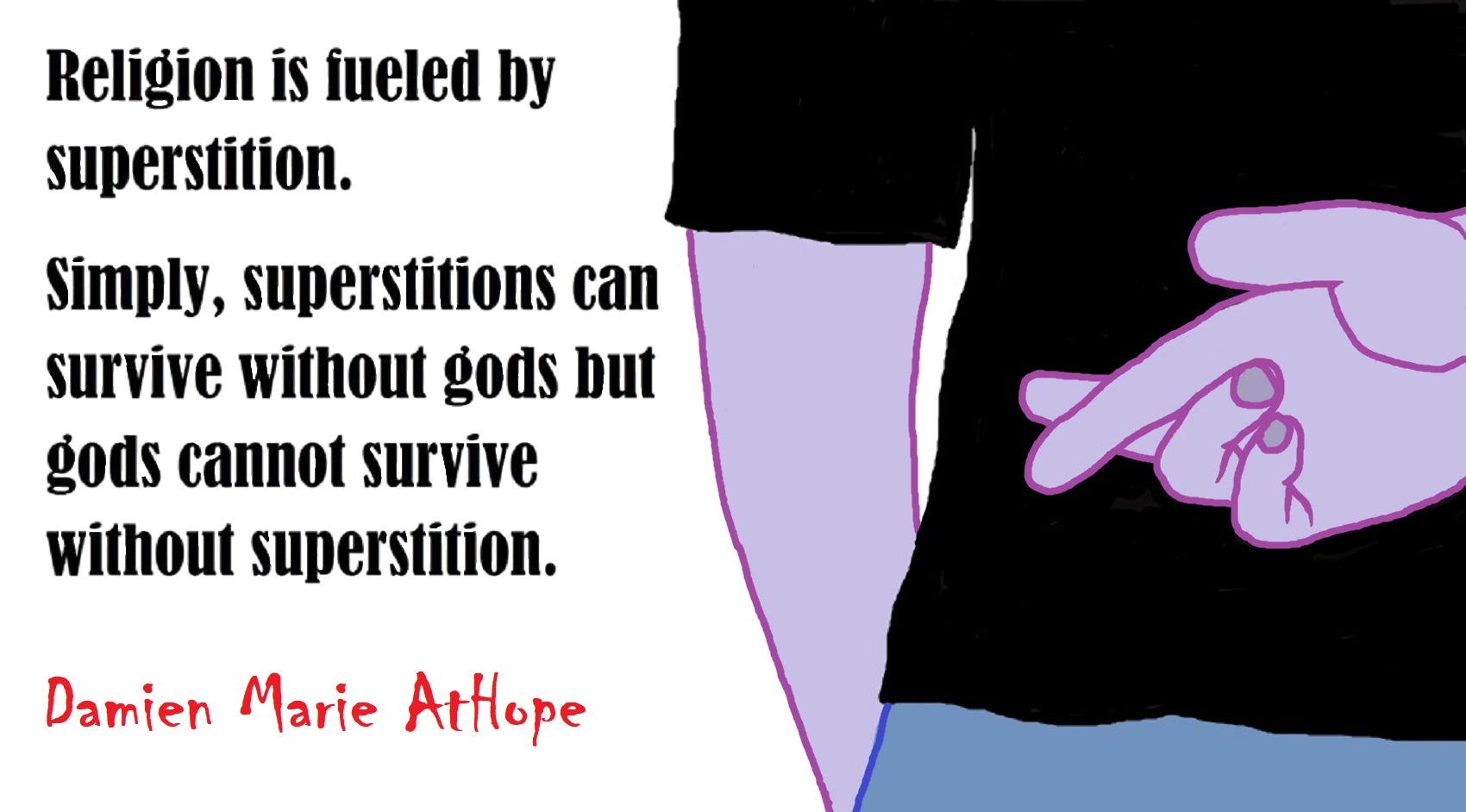
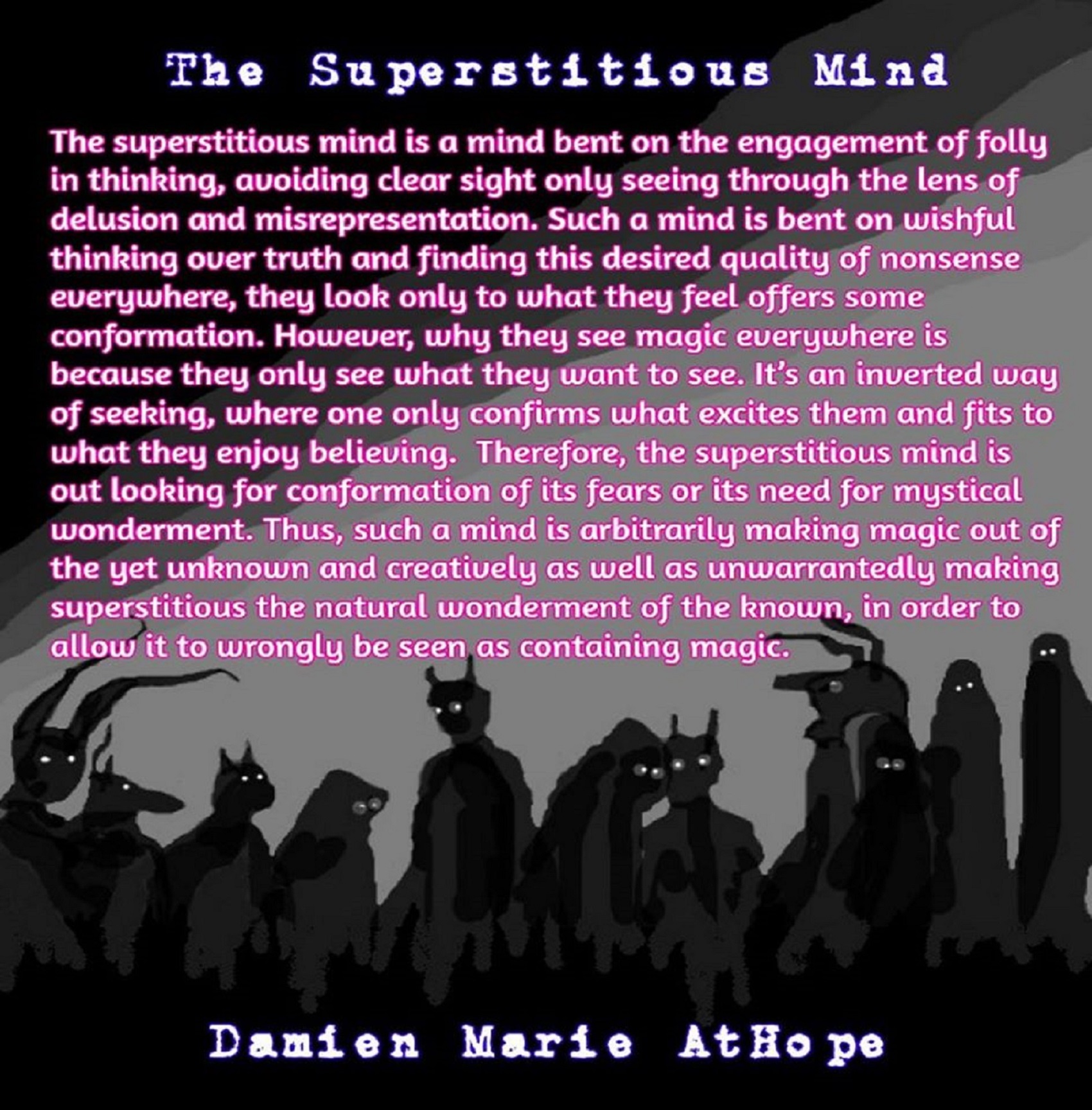
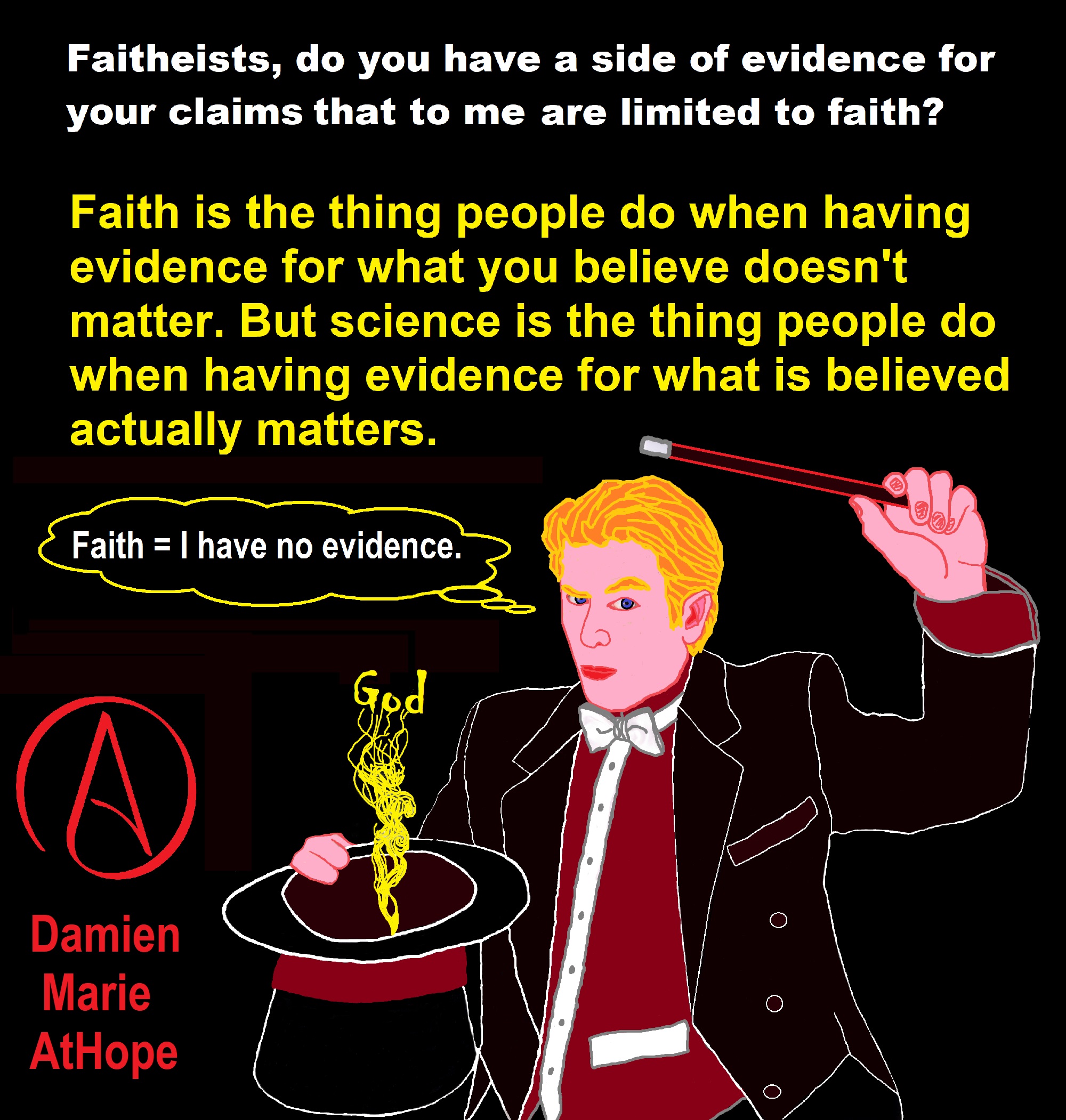


“Theists, there has to be a god, as something can not come from nothing.”
Well, thus something (unknown) happened and then there was something. This does not tell us what the something that may have been involved with something coming from nothing. A supposed first cause, thus something (unknown) happened and then there was something is not an open invitation to claim it as known, neither is it justified to call or label such an unknown as anything, especially an unsubstantiated magical thinking belief born of mythology and religious storytelling.


While hallucinogens are associated with shamanism, it is alcohol that is associated with paganism.
The Atheist-Humanist-Leftist Revolutionaries Shows in the prehistory series:
Show two: Pre-animism 300,000 years old and animism 100,000 years old: related to “Anarchism and Socialism”
Show tree: Totemism 50,000 years old: related to “Anarchism and Socialism”
Show four: Shamanism 30,000 years old: related to “Anarchism and Socialism”
Show five: Paganism 12,000 years old: related to “Anarchism and Socialism”
Show six: Emergence of hierarchy, sexism, slavery, and the new male god dominance: Paganism 7,000-5,000 years old: related to “Anarchism and Socialism” (Capitalism) (World War 0) Elite and their slaves!
Prehistory: related to “Anarchism and Socialism” the division of labor, power, rights, and recourses: VIDEO
Pre-animism 300,000 years old and animism 100,000 years old: related to “Anarchism and Socialism”: VIDEO
Totemism 50,000 years old: related to “Anarchism and Socialism”: VIDEO
Shamanism 30,000 years old: related to “Anarchism and Socialism”: VIDEO
Paganism 12,000 years old: related to “Anarchism and Socialism” (Pre-Capitalism): VIDEO
Paganism 7,000-5,000 years old: related to “Anarchism and Socialism” (Capitalism) (World War 0) Elite and their slaves: VIEDO
Paganism 5,000 years old: progressed organized religion and the state: related to “Anarchism and Socialism” (Kings and the Rise of the State): VIEDO
Paganism 4,000 years old: related to “Anarchism and Socialism” (First Moralistic gods, then the Origin time of Monotheism): VIEDO
I do not hate simply because I challenge and expose myths or lies any more than others being thought of as loving simply because of the protection and hiding from challenge their favored myths or lies.
The truth is best championed in the sunlight of challenge.
An archaeologist once said to me “Damien religion and culture are very different”
My response, So are you saying that was always that way, such as would you say Native Americans’ cultures are separate from their religions? And do you think it always was the way you believe?
I had said that religion was a cultural product. That is still how I see it and there are other archaeologists that think close to me as well. Gods too are the myths of cultures that did not understand science or the world around them, seeing magic/supernatural everywhere.
I personally think there is a goddess and not enough evidence to support a male god at Çatalhöyük but if there was both a male and female god and goddess then I know the kind of gods they were like Proto-Indo-European mythology.
This series idea was addressed in, Anarchist Teaching as Free Public Education or Free Education in the Public: VIDEO
Our 12 video series: Organized Oppression: Mesopotamian State Force and the Politics of power (9,000-4,000 years ago), is adapted from: The Complete and Concise History of the Sumerians and Early Bronze Age Mesopotamia (7000-2000 BC): https://www.youtube.com/watch?v=szFjxmY7jQA by “History with Cy“
Show #1: Mesopotamian State Force and the Politics of Power (Samarra, Halaf, Ubaid)
Show #2: Mesopotamian State Force and the Politics of Power
Show #3: Mesopotamian State Force and the Politics of Power (Uruk and the First Cities)
Show #4: Mesopotamian State Force and the Politics of Power (First Kings)
Show #5: Mesopotamian State Force and the Politics of Power (Early Dynastic Period)
Show #6: Mesopotamian State Force and the Politics of Power
Show #7: Mesopotamian State Force and the Politics of Power (Sargon and Akkadian Rule)
Show #9: Mesopotamian State Force and the Politics of Power (Gudea of Lagash and Utu-hegal)
Show #12: Mesopotamian State Force and the Politics of Power (Aftermath and Legacy of Sumer)

The “Atheist-Humanist-Leftist Revolutionaries”
Cory Johnston ☭ Ⓐ Atheist Leftist @Skepticallefty & I (Damien Marie AtHope) @AthopeMarie (my YouTube & related blog) are working jointly in atheist, antitheist, antireligionist, antifascist, anarchist, socialist, and humanist endeavors in our videos together, generally, every other Saturday.
Why Does Power Bring Responsibility?
Think, how often is it the powerless that start wars, oppress others, or commit genocide? So, I guess the question is to us all, to ask, how can power not carry responsibility in a humanity concept? I know I see the deep ethical responsibility that if there is power their must be a humanistic responsibility of ethical and empathic stewardship of that power. Will I be brave enough to be kind? Will I possess enough courage to be compassionate? Will my valor reach its height of empathy? I as everyone, earns our justified respect by our actions, that are good, ethical, just, protecting, and kind. Do I have enough self-respect to put my love for humanity’s flushing, over being brought down by some of its bad actors? May we all be the ones doing good actions in the world, to help human flourishing.
I create the world I want to live in, striving for flourishing. Which is not a place but a positive potential involvement and promotion; a life of humanist goal precision. To master oneself, also means mastering positive prosocial behaviors needed for human flourishing. I may have lost a god myth as an atheist, but I am happy to tell you, my friend, it is exactly because of that, leaving the mental terrorizer, god belief, that I truly regained my connected ethical as well as kind humanity.
Cory and I will talk about prehistory and theism, addressing the relevance to atheism, anarchism, and socialism.
At the same time as the rise of the male god, 7,000 years ago, there was also the very time there was the rise of violence, war, and clans to kingdoms, then empires, then states. It is all connected back to 7,000 years ago, and it moved across the world.
Cory Johnston: https://damienmarieathope.com/2021/04/cory-johnston-mind-of-a-skeptical-leftist/?v=32aec8db952d
The Mind of a Skeptical Leftist (YouTube)
Cory Johnston: Mind of a Skeptical Leftist @Skepticallefty
The Mind of a Skeptical Leftist By Cory Johnston: “Promoting critical thinking, social justice, and left-wing politics by covering current events and talking to a variety of people. Cory Johnston has been thoughtfully talking to people and attempting to promote critical thinking, social justice, and left-wing politics.” http://anchor.fm/skepticalleft
Cory needs our support. We rise by helping each other.
Cory Johnston ☭ Ⓐ @Skepticallefty Evidence-based atheist leftist (he/him) Producer, host, and co-host of 4 podcasts @skeptarchy @skpoliticspod and @AthopeMarie
Damien Marie AtHope (“At Hope”) Axiological Atheist, Anti-theist, Anti-religionist, Secular Humanist. Rationalist, Writer, Artist, Poet, Philosopher, Advocate, Activist, Psychology, and Armchair Archaeology/Anthropology/Historian.
Damien is interested in: Freedom, Liberty, Justice, Equality, Ethics, Humanism, Science, Atheism, Antiteism, Antireligionism, Ignosticism, Left-Libertarianism, Anarchism, Socialism, Mutualism, Axiology, Metaphysics, LGBTQI, Philosophy, Advocacy, Activism, Mental Health, Psychology, Archaeology, Social Work, Sexual Rights, Marriage Rights, Woman’s Rights, Gender Rights, Child Rights, Secular Rights, Race Equality, Ageism/Disability Equality, Etc. And a far-leftist, “Anarcho-Humanist.”
I am not a good fit in the atheist movement that is mostly pro-capitalist, I am anti-capitalist. Mostly pro-skeptic, I am a rationalist not valuing skepticism. Mostly pro-agnostic, I am anti-agnostic. Mostly limited to anti-Abrahamic religions, I am an anti-religionist.
To me, the “male god” seems to have either emerged or become prominent around 7,000 years ago, whereas the now favored monotheism “male god” is more like 4,000 years ago or so. To me, the “female goddess” seems to have either emerged or become prominent around 11,000-10,000 years ago or so, losing the majority of its once prominence around 2,000 years ago due largely to the now favored monotheism “male god” that grow in prominence after 4,000 years ago or so.
My Thought on the Evolution of Gods?
Animal protector deities from old totems/spirit animal beliefs come first to me, 13,000/12,000 years ago, then women as deities 11,000/10,000 years ago, then male gods around 7,000/8,000 years ago. Moralistic gods around 5,000/4,000 years ago, and monotheistic gods around 4,000/3,000 years ago.
To me, animal gods were likely first related to totemism animals around 13,000 to 12,000 years ago or older. Female as goddesses was next to me, 11,000 to 10,000 years ago or so with the emergence of agriculture. Then male gods come about 8,000 to 7,000 years ago with clan wars. Many monotheism-themed religions started in henotheism, emerging out of polytheism/paganism.
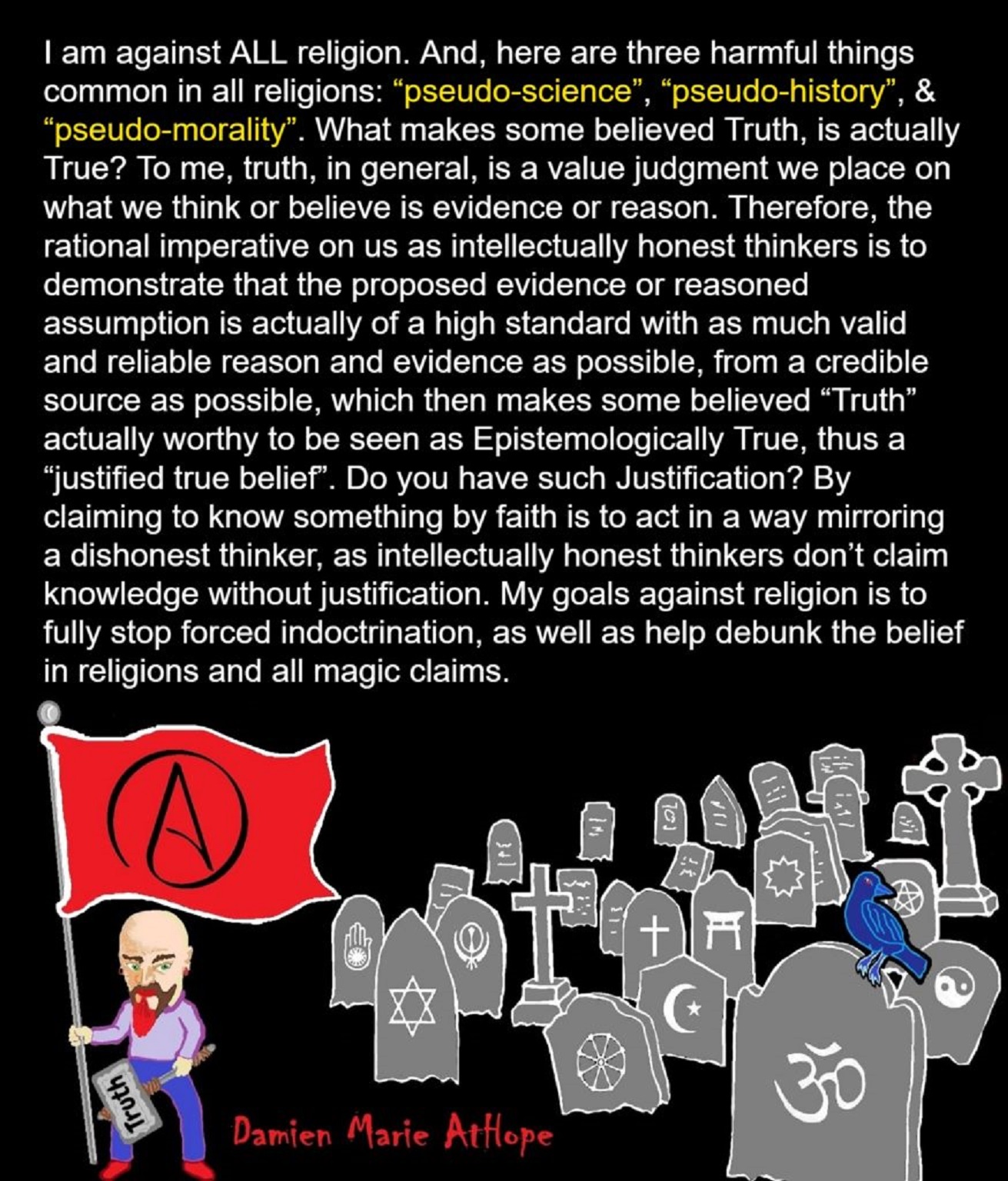

Damien Marie AtHope (Said as “At” “Hope”)/(Autodidact Polymath but not good at math):
Axiological Atheist, Anti-theist, Anti-religionist, Secular Humanist, Rationalist, Writer, Artist, Jeweler, Poet, “autodidact” Philosopher, schooled in Psychology, and “autodidact” Armchair Archaeology/Anthropology/Pre-Historian (Knowledgeable in the range of: 1 million to 5,000/4,000 years ago). I am an anarchist socialist politically. Reasons for or Types of Atheism
My Website, My Blog, & Short-writing or Quotes, My YouTube, Twitter: @AthopeMarie, and My Email: damien.marie.athope@gmail.com


